
Bits and Bricks
Adam Meziou
A thesis book for the Final Architectural Project submitted to the Department of Architecture, School of Architecture, Art, and Design, American University in Dubai
In partial fulfillment of the requirements for the Degree of Bachelor of Architecture
Fall 2021
ABSTRACT:
It has become a regularity to see many children, teens, and even adults actively playing video games as part of a lifestyle. The video game industry has been rapidly growing over the years to the extent that the number of video gamers worldwide has exceded 2.5 billion in 2020; and that is just slightly more than 30% of the world’s population. A single game could harbor the hearts of millions of gamers; this is the case for games such as Final Fantasy 14, Grand Theft Auto, World of Warcraft and many others in the growing list of video games.
But what is it that really attracts people to this type of entertainment? Some may say the gameplay, the story, or the difficulty; however, there is one aspect that plays a huge role in the game yet is often neglected. The architecture. The three popular video game examples already mentioned happen to focus a lot on the architectural aspect, too. Architecture starts to see light in a relationship with the video game industry. This is most evident in the virtual usage in both video games and architecture.
Sources have shown that the link was greatly enhanced when the virtual world transitioned from two-dimensional graphics to much bigger three-dimensional universes. This gave way to a stronger sense of reality that allowed the creation of more immersive worlds, which, in some cases, can mirror a real-life architectural and social experience. Elements such as landscapes and built structures in video games can be seen as architectural, as they convey spaces that fall under the fields of urban design and landscape architecture.
The purpose of this research is to explore the intersections between architecture and video games. The intersections may be in the form of architecture present in the virtual world of gaming, or the potential of importance of video games in the field of architecture. The method behind this would be to pair and compare theories of urban design and architecture with design theories of immersive and successful video games, especially open-world games.
Keywords: Architecture, Virtual, Video Games, Integration, Immersive
Student Signature: ____________
Advisor / Professor Name:
Date ___________
Advisor / Professor Signature: _________ Date ___________
BITS N’ BRICKS Adam Meziou
ACKNOWLEDGMENT:
My gratitude directed first to God, the omnipotent. To my mother who gave me her lap and shoulder in the thick and the thin. To my father for endless support that kept me going. I thank all professors who lead me to this stage. Professor Annarita Cornaro for her guidance, seeing the potential of my abilities, and being patient with my mistakes. To my friends. Nadine for being a close friend and for all the zoom calls that got both of us through the late night stays. Aisha for teaching me elegance of design in a group project I will never forget. Eliana, for being a sweet friend and the late night drives back home. Ahmad, who saw greatness in what I do. Nael for the brightening up of the mornings with an order of Mcdonald's breakfast. Priyanka, a master artist who always inspired me to draw more and better. Taimaa for saving me when I am stuck at the worst possible scenarios. And to all my friends
I would like to thank all the epic gamer friends that got me into the obsession with video games. Hossam for finally accepting my invites after declining twenty times. Gilbert for being a great warrior and being always online for gamer time. Minna and Kuro for loads of fun playing quick and chill League of Legends matches. Gerassim, an old friend who introduced me to video games and PC gaming.
Dedicated to all those who believed my video games were a waste of time
LEVEL 6
LEVEL 7
LEVEL 8
001
2
3
1
STAGE SELECT ACT
ACT
ACT
LEVEL 1 Video Games
LEVEL 5 Case Studies
Program
Concept
Context
Intersection
LEVEL 2 Architecture LEVEL 3 The Player LEVEL 4
002 STAGE 1 Concept Proposals | 132 STAGE 1 STAGE 2 STAGE 3 A Beginning | 05 An Industry | 07 A Spatial Experience | 09 STAGE 1 STAGE 2 STAGE 3 The Design Process in Games | 19 Game Maps and Map Planning | 25 The Architect in the Game Field | 37 STAGE 1 STAGE 2 STAGE 3 Scenery, Interaction, Construction | 41 Play of Emotions Through Envioronments | 49 Social Experiences | 53 STAGE 1 STAGE 2 Architectural Education in Video Games | 61 Participative Design and Video Games | 63 STAGE 1 STAGE 2 STAGE 3 Defiant Architecture | 74 Citadel Architecture | 68 Game-Inspired Architecture | 86 STAGE 1 Proposed Program | 106 STAGE 1 STAGE 2 Potential Site Choices | 113 Site Analysis | 121
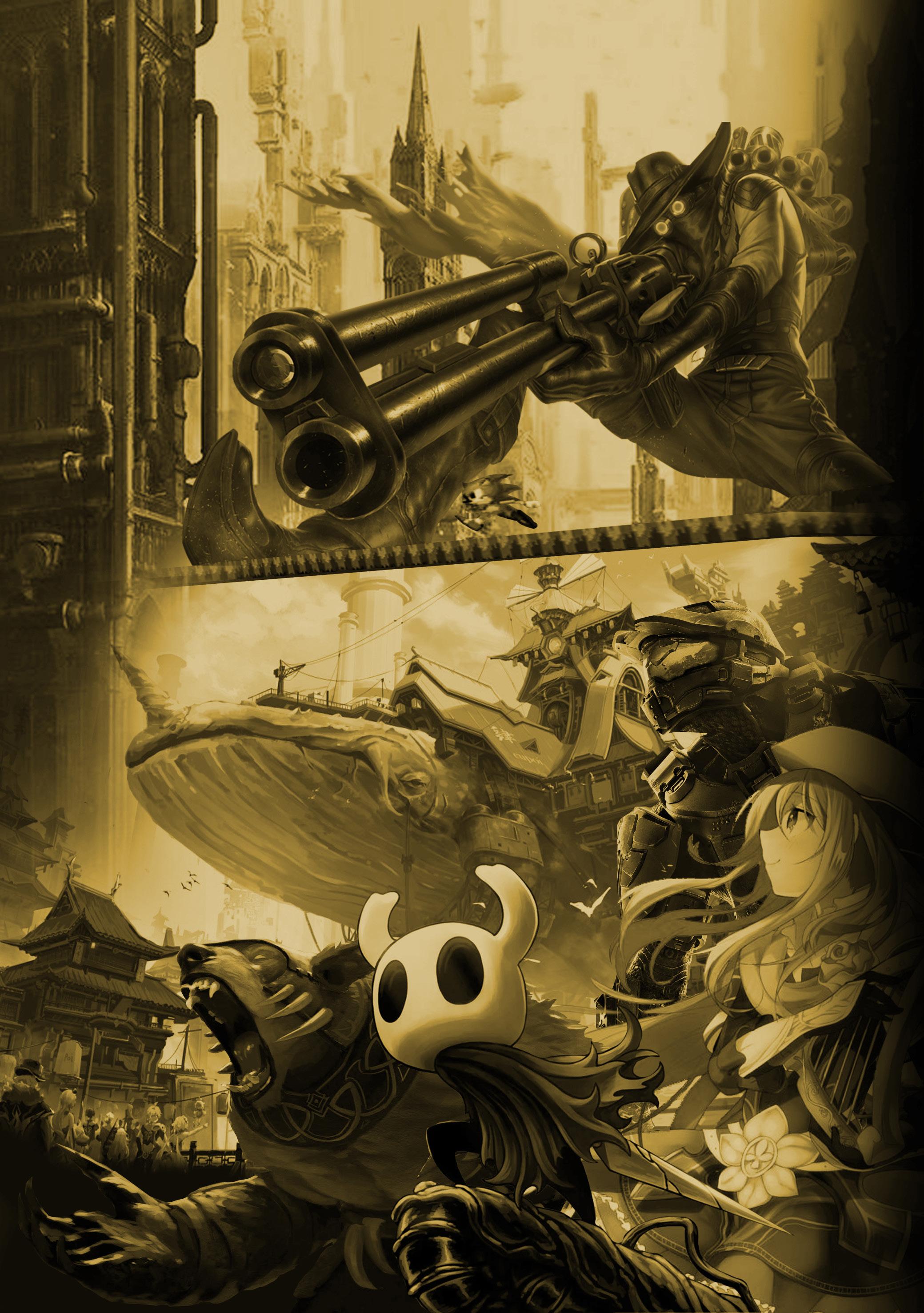
PAGES : 100
MODE : FULLSCREEN
PAPER WEIGHT : 90 GSM
GAME : START
DIFFICULTY : HARD
RESOLUTION : 250 X 17.6
LEVELS : 5
002
ACT 1
PHOT NUMBER : 1 TYPE : ACT COVER LEFT PHOTO : COLLAGE
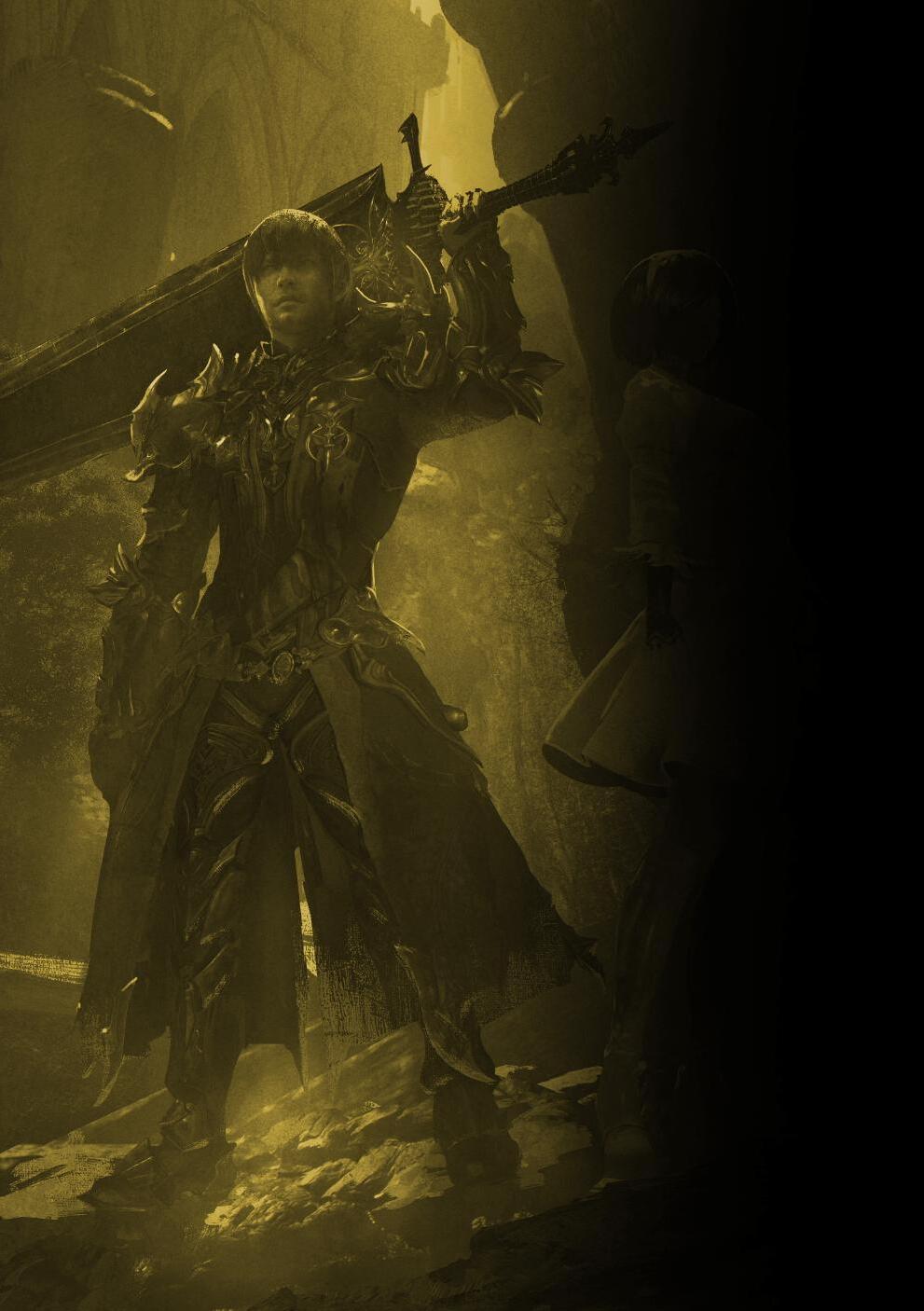
004 LEVEL VIDEO GAMES 1 TOPIC : VIDEO GAMES STAGES : 3 PAGES : 12 PHOT NUMBER : 2 TYPE : LEVEL COVER LEFT PHOTO : FINAL FANTASY XIV
VIDEO GAMES A Beginning
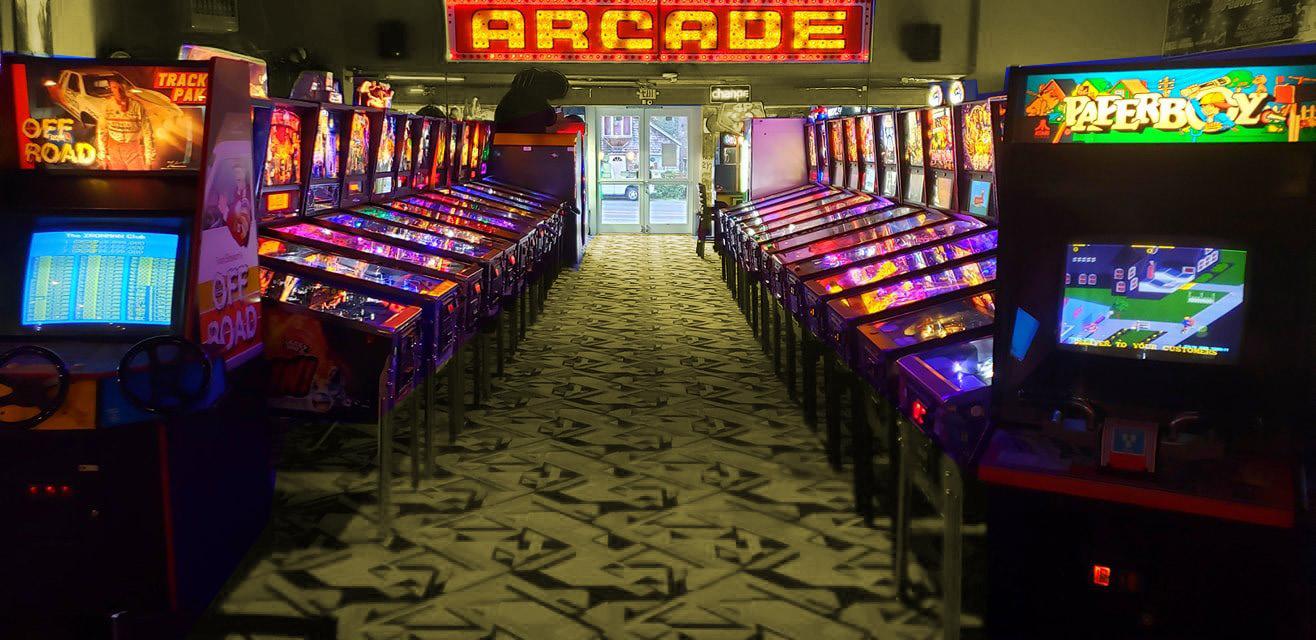
As a concept, video games began in 1947. Thomas T. Goldsmith created an interaction within a cathode-ray tube, which was the earliest sign of a video game. Fifteen years later, a true firstvideo game is created in 1962 at the Massachusetts Institute of Technology (MIT). The development of mainframe games continued into the 1970s, and also included the first online games, like Maze War (1974) and Spasim (1974), which were among the first games to network players together, allowing them to play from different locations at the same time. Thanks to the arcade, many games known in the present day as classics came to life, like Pac-Man (1980), Missile Command (1980) and Defender (1981). (JP Wolf). The gathering of players in the arcade was empowered by the concept of the “high score” into the arcade video games in the mid-1970’s, which drove players into visiting the arcade to beat each other’s highscores. Communities were created through the arcade in which competitive mastery was discreetly expressed by the previous visitor of the arcade cabin (Heineman). Up until this point in time, video games were primarily played on machines that are stationary, which can be seen as an example in the arcade. This promoted a physical social aspect in which gamers can meet in a space that stores these machines and enjoy playing them together.
A series of experiments under the name ‘’Brown Box’’ were conducted in 1966 by Ralph H. Baer. The prototypes of these experiments lead to the first home video game console in 1972; Magnavox Odyssey. The Odyssey successfully sold 350,000 console units, and was then exported to many countries around the world. This was a beginning that had set the pace for a global industry. (JP Wolf). Considering the amount of Magnavox units sold, it can be estimated that there were around half a million players in the 1970’s.
TYPE : CONSOLE
NAME : MAGNAVOX ODYSSEY
UNITS SOLD : 350,000
CATEGORY : PLAYERS
DATE : 1970's
SCALE : GLOBAL
ESTIMATION : 500,000 GAMERS
005
3 Game Over Arcade, Lincoln City, United States
TIMELINE Per Decade
The 1990’s marked the beginning of a new age for video games, an age in which the new standards for graphics upgraded towards the three-dimensional. Many game genres such as racing, shooting, sports, and fighting games had switched from twodimensional to three-dimensional graphics. The three-dimensional aspect was on the rise when it came to home-based games, too. (Thuning). This implies that at the time, although home-based consoles were released, the arcade was still being used; as the upgrade to three-dimensional graphics included it too. Through this point in the timeline of video games, it can be seen that a turning point is at play in which the physical social aspect is being minimized. Players had obtained the ability to simply play at the comfort of their houses without the need to go to spaces such as the arcade.

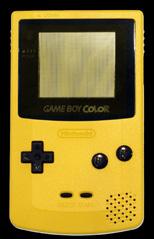


However, the reduction of socialization through the appearance of home consoles did not continue. The social aspect, though not physical, was brought back to the video game medium. This can be mostly attributed to the birth of the internet.
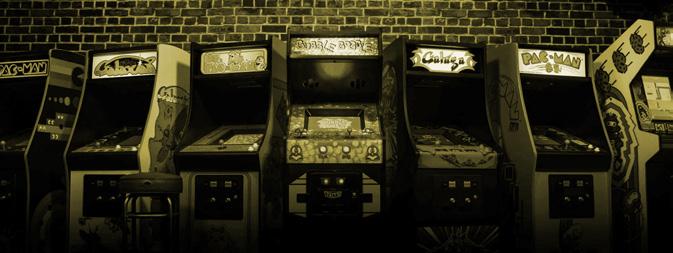


The release of the internet to the public was a major advance in the video game industry. Online multiplayer games grew in size and numbers after the internet was commercialized in 1995. The ability to accommodate a large amount of players eventually allowed for MMORPGs (Massively Multiplayer Online Role-Playing Games). This type of games took in hundreds of thousands of players playing together in one medium. (Thuning). This mass grouping of individuals within one space reshaped the perception of social space in video games. Gaming that was once a leisure activity with friends in the arcade or in a public gaming area, had become a virtual event. The gathering space had merged with the game itself.
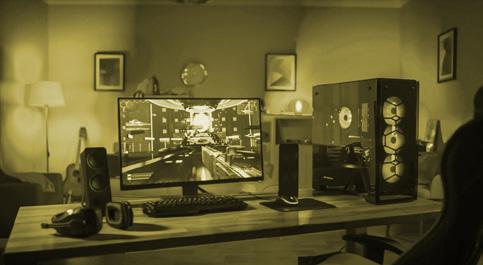

006
4
Television Video Game Systems
6 | The Arcade Handheld Game Systems
GameBoy ATARI Lynx GameBoy Color
Atari 2600
Magnavox Odyssey
Online Multiplayer and PC Gaming Popularity
1970's 1980's 1990's
Virtual Reality - PC, Consoles, and Handhelds remain popular
2000's Present
VIDEO GAMES An Industry
Video games, a form of entertainment that attracted and continues to attract an enormous population is bound to have an industrial sector of its own. A good starting point to understand the place of video games in the market and its influence on it is the arcade. This is due to the arcade’s extreme popularity and status as one of the pioneering platforms for video games. The arcade made a great entrance into the market. The time between the late 1970’s to mid – 1980’s was considered the ‘’Golden Age of Arcade Games’’ due to the arcade’s extreme popularity at the time (Northfield). The arcade machines were coin-operated and would usually cost a quarter or fifty cents depending on the game (JP Wolf). The price per arcade session may appear negligible, yet many companies have accumulated a large amount of wealth from single titles. Space Invaders by Taito had a yield of $2.7 billion by 1978, as well as the wellknown Pac-Man by NAMCO which had a revenue of $3.5 billion by 1980. However, this boom in arcade business was slowly declining. This decline can be primarily attributed to the video game crash of 1983 as well as the appearance of home consoles (Northfield).
Portable and handheld games slowly became popular in the 1990’s, while holding its own separate sector of the market. The popular classic game Tetris had its first cellphone version created in 1994 for the Hagenuk MT-2000. Later on, more devices will join the handheld gaming industry as newer platforms. Mobile and handheld games, due to their portability, were an alternative to console games when users were on the go (JP Wolf). This may also hint that the video game space has the ability to be a nomadic virtual space; in which the player is constantly moving while still within a defined space that is, however, virtual. The number of players rose to the millions in the 2000’s after the release of dozens of new MMORPG’s. Web based games came in as a new type of online game that is played on a personal computer without any installation. IPods, iPads and other devices soon joined as medium for such games. For this, the video game industry brought a diversity of platforms, games, industry sectors and users. This diversity is a strong reason as to why the video game industry stayed alive to this day and continues to grow exponentially (Thuning).
Recall the Magnavox Odyssey, which at the time of its discontinuation in 1975 had cost $99.95 (which is equivalent to $618 in 2020) (Smith). Taking into account that 350,000 units were sold, $35 million would be the yield of this console’s total sales. If it were to be considered that the Magnavox was not the only console of its age (ATARI being another example), two statements can be deduced. The console video game industry was already a multi-million dollar sector at a very early stage. And this includes only the console-based video games, disregarding the arcade titles that had made billions of dollars in revenue.
In the present day, the video game sector of the industry remains in a relentless growth that shows no sign of decay. ‘’The Asia Pacific region is at the heart of the global video gaming industry. According to estimates, there were over 1.5 billion video gamers in the region in 2020, generating a combined revenue of 78.3 billion U.S. dollars. This represents almost double the revenue generated in the second largest region, North America. Given how much money the average gamer devotes to their hobby, it is no wonder that the gaming industry is worth billions – gamers worldwide spent an average of over $123 on gaming over a three month period in 2018, which included purchases on full games, downloads, and supporting live streamers’’ (Clement).
007
1980 REVENUE
B REGION
GAMERS : 1.5 B 2020 REVENUE : $78.3 B
REGION
CATEGORY
AVERAGE SPENT PER 3 MNTHS
GAME : PAC-MAN COMPANY : NAMCO
: $3.5
: ASIA PACIFIC
GAME : SPACE INVADERS
COMPANY
:
TAITO
1980 REVENUE : $2.7 B
: WORLDWIDE
: GAMERS
: $123
Video Game User Population Growth per Year
008 008 2023 4 3 2 1.99 2.11 2.26 2.42 2.55 2.95 3.07 1 2022 2021 2020 2019 2018 2017 2016 2015 A | Gamers in Billions
2.81 2.69
VIDEO GAMES A Spatial Experience

The concept of space in video games can be interpreted as a physical space and a virtual space. In order to play the game, the player must first be physically present in a space. Once the game has been started, the player becomes part of a virtual experience and a physical one through eye-hand coordination. ‘’Touch is the sensory mode which integrates our experiences of the world and of ourselves. Even visual perceptions are fused and integrated into the haptic continuum of the self; my body remembers who I am and how I am located in the world’’ (Pallasmaa). Through this, it can be understood that the idea of space in video games is a focus on a link between the sense of touch that holds the controller to navigate through a space that the sense of sight visualizes.
Three-dimensional game spaces allow the player to perform regular actions, like crawling, jumping and running, and irregular ones like flying and teleporting. These
actions are a key to exploring a world of fiction and unheard-of forms and functions. These spaces may sometimes already exist in the real world and are then regenerated as a video game space. This space, over time, has become more and more accessible and infinite. It may show a world of dreams, or one of nightmares. By exploring such spaces, it is possible to discover the mechanism of the game experience, its presentation, readability, significance, and ability of improvement. That being said, it is not a simple matter of just creating the 3D graphics. The three-dimensional graphics are more of a means to achieve a goal that most video games aspire to achieve. That is, the ability to allow the player to imagine the virtual space as though it was a real physical one. This is the purpose of the 3D; it is to establish this imaginary gateway between the non-fictional and the fictional as a space (Nitsche).
Video games have made appearances in the academic sector and became a title of multiple debates. Among these debates is the discussion of the video game space and its visualization (Nitsche). As previously mentioned, video games have covered different platforms, dimensionalities, graphics, and users. For this, it is not possible to understand and analyze video
games under one theory or way of analysis. Different yet interconnected approaches are required to delve through the understanding of the game space. In this case, it is possible to use the concept of the triad Firmitas, Utilitas, Venustas (Strength, Utility, Beauty) from Vitruvius’s Latin text (Vitruvius).
009
TRANSITION TRANSITION : 2011 1998 1999 2002 2004 2006 2009 2011 2011 2013 2014 2016 5
GAME : POKÉMON IDEA : 2D TO 3D
Vituvius, in his book of 10 Books On Architecture, explains the famous triad of Firmitas, Venustas, and Utilitas. Architecturally speaking, these three concepts imply the following: Firmitas is the idea that a building or structure must be structurally stable and able to maintain its own mass. Venustas is the idea of beauty and appearance that the architecture creates. Lastly, Utilitas revolves around the function, and that the architecture created must serve a purpose and be of utility to its users (Vitruvius). These same concepts shall be investigated under the umbrella of video games, thus possibly creating a strong link between video game spaces and architectural ones.
THE TRIAD FIRMITAS
As a start, the video game space requires a form of structure. This is done through multiple aspects that build up a structure. Game rules, interactivity, narrative, and space are all contributors in this case (Nitsche). This particular aspect is not applicable the exact way Vitruvius had intended, as video game spaces and buildings do not necessarily have to be structurally stable in order to serve their purpose. However, the concept of structural strength can be replaced by the structure of the rules and codes of a video game and its space; as they are what decides between the possible and the impossible.
A government lays out a set of rules, the constitution represents the said set, and the citizens are subject to the laid out rules of the constitution (Nitsche). Video games are not too far from this description. The user does not experience an ultimate freedom simulator when playing the game, as it contains rules created by the programmer in the form of coding. The programmer represents the government; it creates the codes within the game. The game itself represents the constitution; it is the combination of all the codes set by the programmer. The citizens, or the player in this case, is the one who experiences the video game and is subject to adhering to all its rules. In order to prevent the confusion between the terms ‘’code’’ and ‘’rule’’, it shall be clarified that the code is the written digital text, while the rule is what appears to the player in the form of restrictions, limitations and directions. The code defines what the rule is.
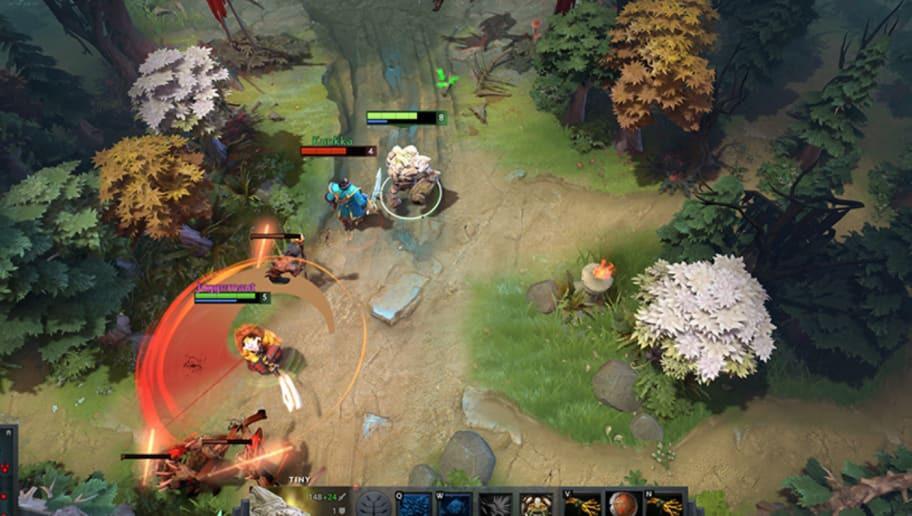
However, the player does not experience these codes as they are. These codes are hidden by the blanket of the virtually generated spaces. What the player truly experiences is the audiovisual result that is created through these codes. The programmer understands the game as a set of codes that create it, while the user is only meant to understand the virtual medium created by these codes and its extents and limitations. The only time where the player comes in contact with the building rules of the game is when the video game crashes or goes through an unexpected error (Nitsche). In a way, this portrays the phenomenon of deception in architecture in which the structure is hidden from the user by a potentially more appealing cover. The appeal at work here brings the research towards the next Vitruvian concept.

010
GAME : DOTA 2 IDEA : CODE (UP) VS RULE (DOWN) 6
"Architecture helps describe how a game world can gain significance and place" (Nitsche). An architectural approach is one way to establish functionality. A function of the space is created upon the need of an interaction between the player and their environment. Thus, the player gains significance within that space by acquiring a role that has something to do with said space. That being said, it should not be forgotten that the player is still inhabiting two spaces at a time, the second one after the virtual being the physical space. This strong relation between the physical may create an intermediate space which Micheal Nitche refers to as the fictional space. A space that occurs
only within the player’s mind, in which they begin to imagine themselves as the characters inside the virtual space. This is often the case with games that involve a character to control, such as racing games like Forza Motorsport and fighting games like Dragonball or Street Fighter.



7
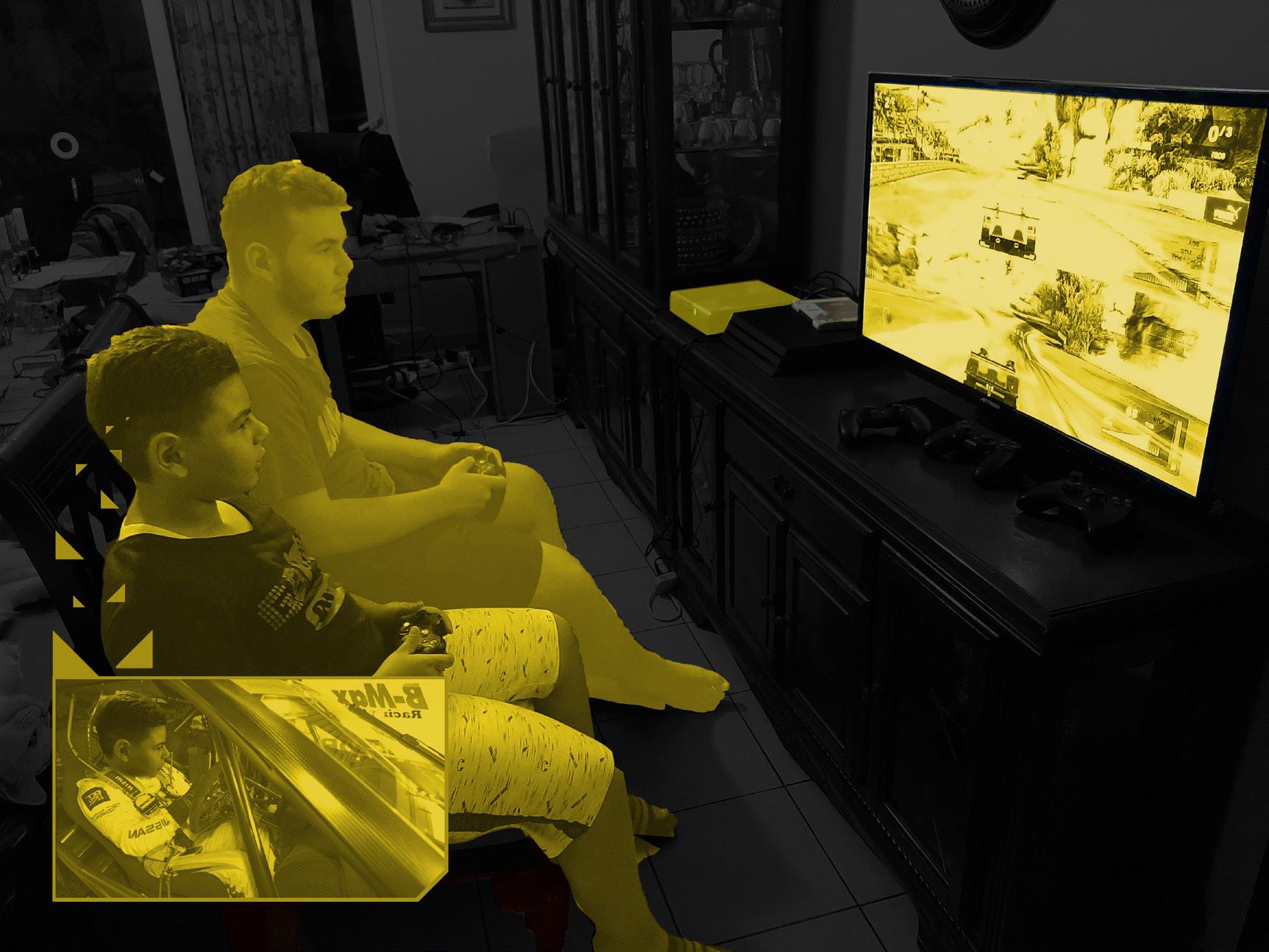
PLAY SOCIAL RULE - BASE
011 FICTIONAL VIRTUAL
LEFT : STREET FIGHTER
RIGHT: DBZ RAGING BLAST
DOWN: FORZA MOTORSPORT 3
7 |
GAME : FORZA MOTORSPORT
MODE
: SPLIT SCREEN MULTIPLAYER
SETTING : AUTHOR'S
HOUSE
As previously mentioned, the player of a game only experiences or manipulates virtual elements that are created by the hidden code. For this, it is important to understand the presentation of these elements and how they can affect the gameplay experience of the user.
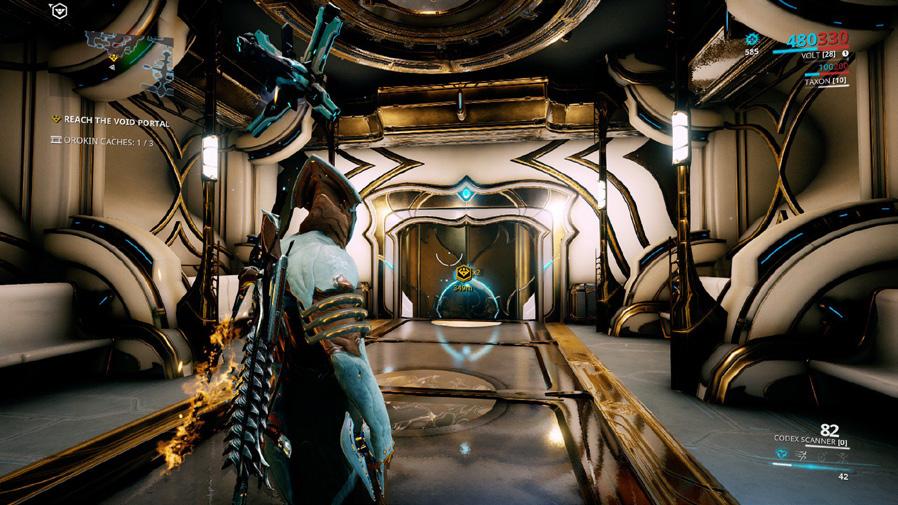
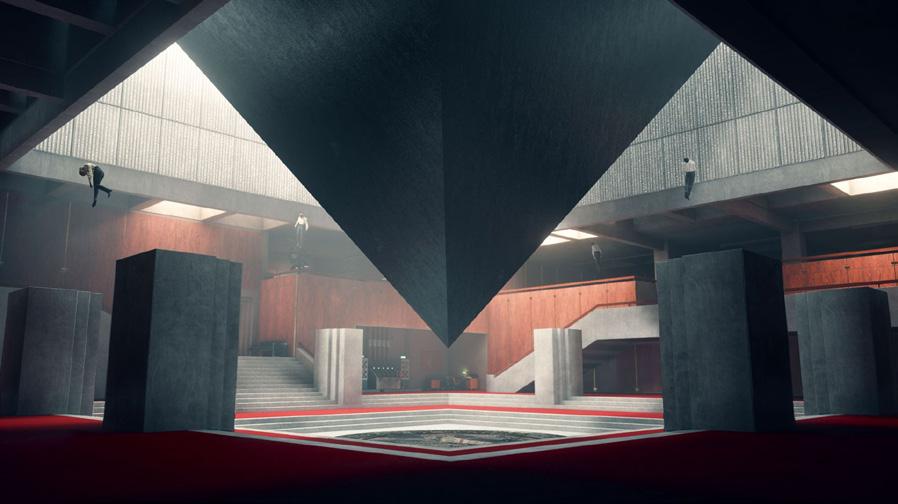
In a video game’s context, beauty is the expression of the computed data as elements of the game, and how this data can be translated into a more audiovisual form (Nitsche). In other words, it is the visible space in which all action and reaction occur within the game. Then, the question stands: what creates this concept of beauty in a video game? Vitruvius defines beauty as what is ‘’produced by the pleasing appearance and good taste of the whole, and by the dimensions of all the parts being duly proportioned to each other’’ (Vitruvius). This leads to the conclusion that the prime driving attributes behind beauty in a space are pleasing appearance, dimension, scale, and proportion. These attributes are not necessarily required to be implemented the same way in all video game spaces. “Gris is full of wonder and beauty and leaves you with a warm glow in your heart” (Shea) was one of the reviews given to the game GRIS. The game revolves around a “hopeful young girl lost in her own world, dealing with a painful experience in her life. Her journey through sorrow is manifested in her dress, which grants new abilities to better navigate her faded reality. As the story unfolds, Gris will grow emotionally and see her world in a different way, revealing new paths to explore using her new abilities (Nomada). Through observation by gameplay, it can be noted that GRIS achieved the aspect of beauty through a colorful pleasing appearance, a defined scale, as well as a clear character-tospace proportion; which in this case sets the girl as a small character within a large space.
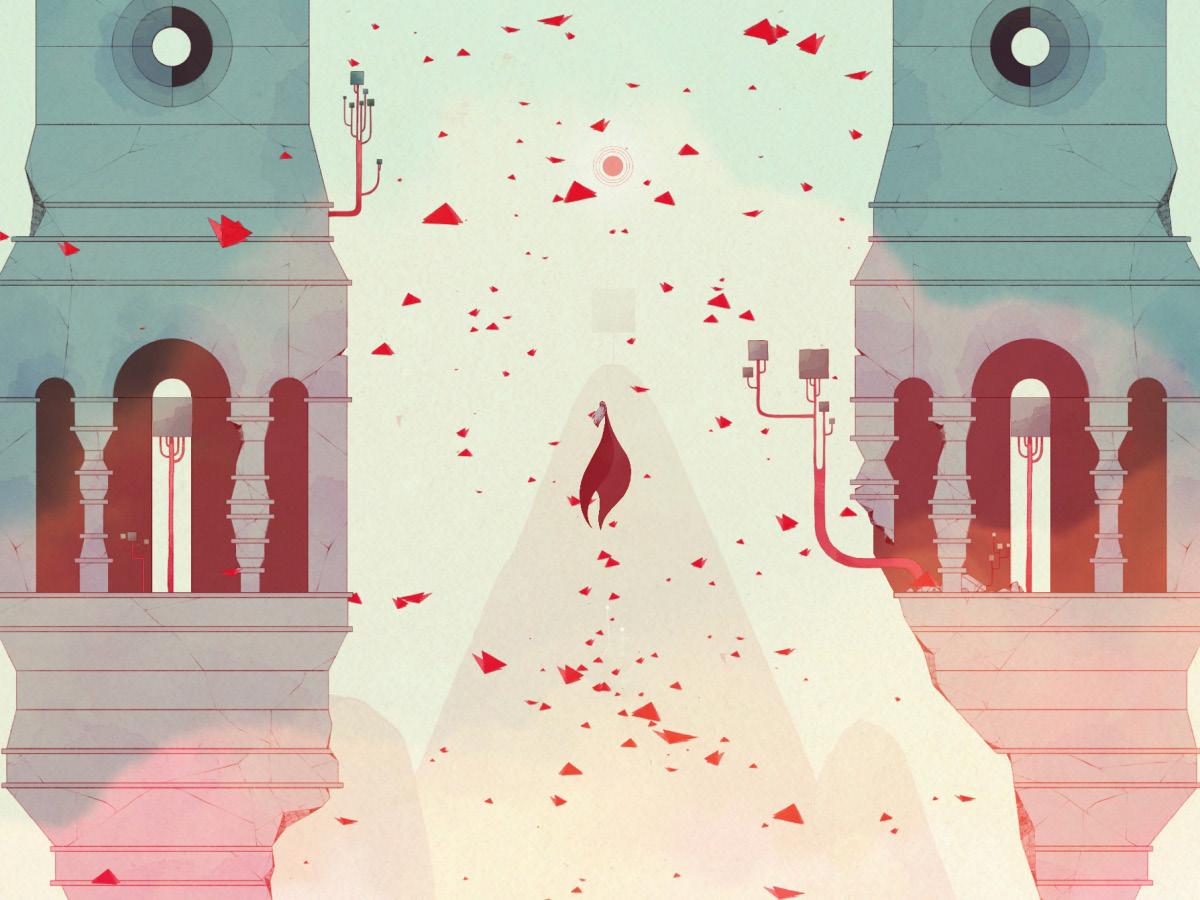
012
VENUSTAS
10 | 11 |
GAME : GRIS 9 |
GAME : CONTROL
GAME : WARFRAME
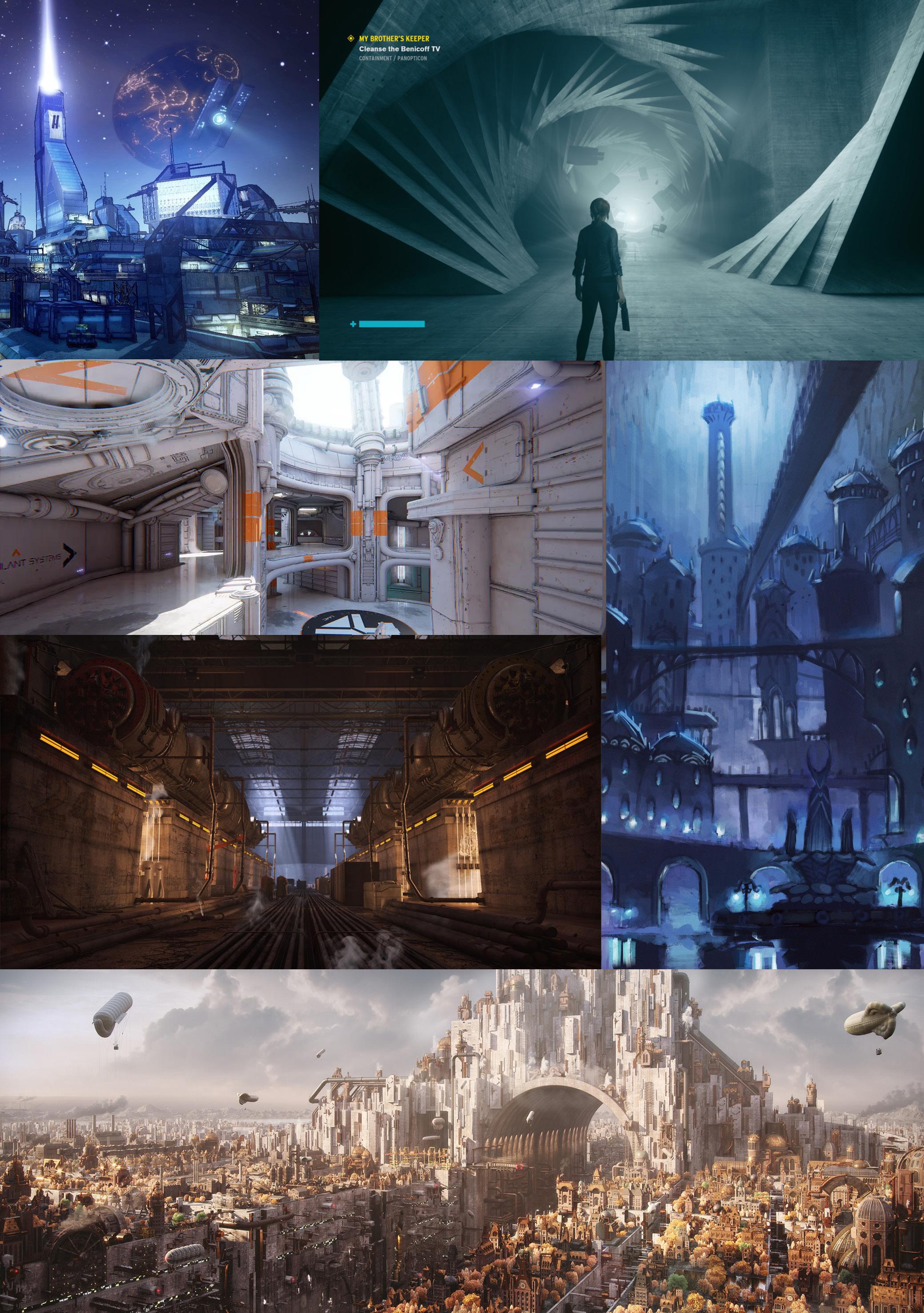
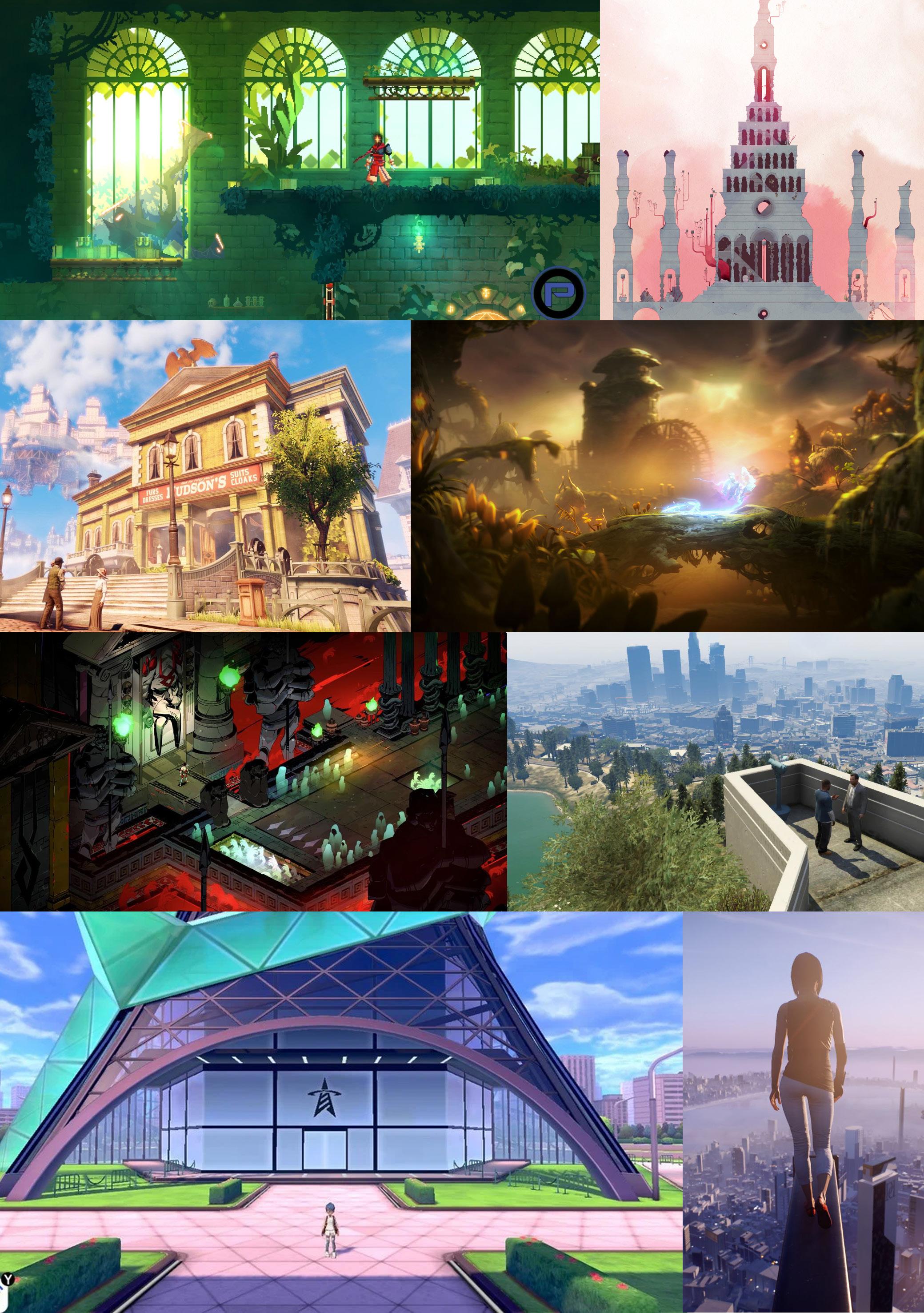

As a space may follow the two previous attributes; strength and beauty, the space must also be of function. This takes the research to the third attribute; Utilitas (Utility). In his book The Production of Space Henri Lefebvre argues that “in architecture form must express function” (Lefebvre). This implies that every space shall have a function of its own. The video game space is no stranger to this statement. The player virtually inhabiting the game space shall seek to complete the tasks given to them within the space. It defines what the player can do within a game space, and what this space can do to make it easier or more difficult for the player to perform his or her actions. Some means to functionality can include the user interface and artificial intelligence (AI). “This interaction of the player with this space through these events, causes this space to change or evolve in character. The video game space, just like the real-life architectural one, becomes alive through the way the users use it or interact with it” (Nitsche). As was seen in the game GRIS how the space changed color depending on certain circumstances or interactions. This also occurs in the rogue-like game Dead Cells. When the player turns on a switch in the Slumbering Sanctuary stage multiple doors are unlocked and the space becomes more intense and aggressive with rumbling quakes and more monsters spawning in the area.
In conclusion, the concepts of Firmitas, Venustas, and Utilitas by Vitruvius are applicable to the world of video games just as they are to the architectural world which the concepts are originally meant for. This level primarily focused on the video game as the target of this idea. In a later level, this concept shall be converted to fit the category of the players themselves rather than the video game. Thus, Firmitas is the idea of construction for the player. Venustas refers to the scenery the player is exposed to. Lastly, Utilitas is what may be referred to as the interaction of the player with the surrounding game space.
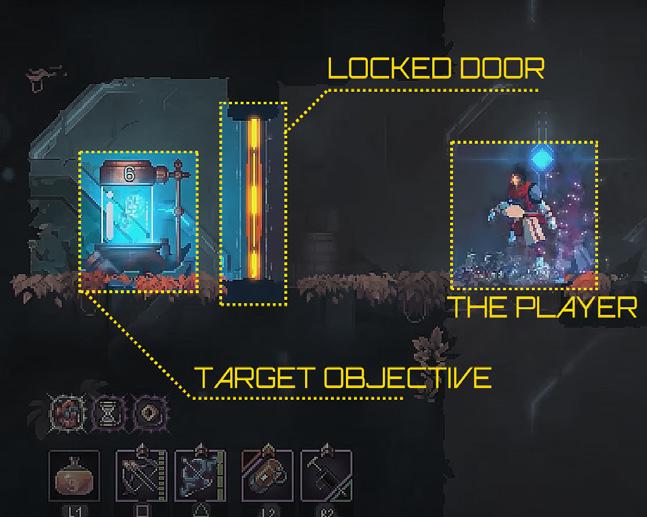
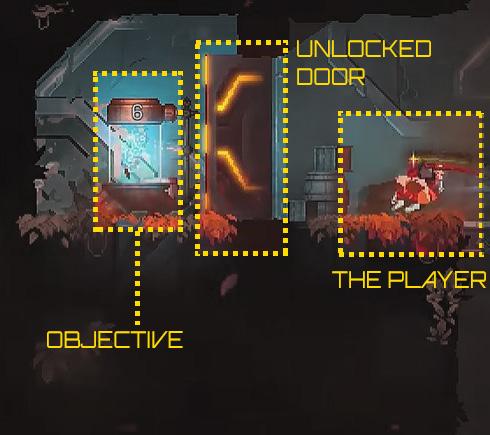
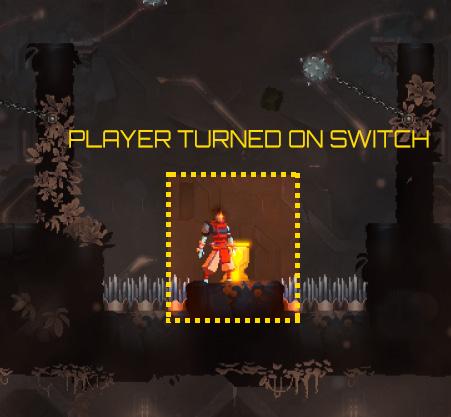
CONVERSION
UTILITAS : CONSTRUCTION
VENUSTAS : SCENERY
UTILITAS : CONSTRUCTION
016
UTILITAS
CLICK TO MOVE TO LEVEL
: THE PLAYER 3
: 1
: DEAD CELLS
: CLOSED
LEVEL
STAGE
GAME
GATES
EASY
: DEAD CELLS
TURN ON SWITCH
: DEAD CELLS
DIFFICULTY :
GAME
ACTION:
GAME
GATES : OPEN
15
DIFFICULTY : HARD

LEVEL ARCHITECTURE 2
TOPIC : ARCHITECTURE
STAGES : 3
PAGES : 20
018
PHOT NUMBER : 2 TYPE : LEVEL COVER LEFT PHOTO : COLLAGE
ARCHITECTURE Design Process of Video Games
An architect does not immediately create a building from scratch; a certain methodology and set of steps are followed in order to reach a final design of a building and see that it is built in a predetermined setting. Conceptual design, schematic design, detail design and construction documents are all essential steps to an architect’s project. This is the case for building in the real world. The virtual counterpart of this is not very different; video game designers follow certain steps in order to achieve the final outcome.
CAPTURE BRAINSTORM
“Video game writing is a process consisting of many ‘deliverables’ for many purposes” (Dille), and it is essential to understand this process and analyze it in order to grasp what ultimately differentiates a good video game space from a better one. Game Design Ed explains that the method behind the design of a video game is usually messy and includes many back and forths. However it may be simplified into the following steps: capture, brainstorm, prototype, playtest, iterate, and implement (Ed).
CAPTURE : The research phase. A game designer must a little about many different subjects like philosophy, mythology, sociology, and economics
BRAINSTORM : Collect all captured elements and brainstorm innovative game ideas. Constraints shall be defined, such as space, time, technology or finance.
PROTOTYPE PLAYTEST
ITERATE IMPLEMENT
PROTOTYPE : Creating multiple prototypes as manifestations of the brainstorming and choose the most appealing.
PLAYTEST : Test the prototype by playing it or inviting an audience to the experience.
ITERATE : After receiving feedback and understanding the flaws and strengths of the prototype, keep updating and testing it until a decent level of quality is achieved
IMPLEMENT : The game is to be released to the public. Changes may still be made in the form of updates.
019
Having understood the general design process, the research can move towards a more specific sector of game design; that is the design of architecture, space, and environment. One way to better understand this sector is to compare two different game environments of two separate video games. Taking into account the reasoning behind their design, inspiration, and style. For instance, a comparison can be made between the spaces of the games Cyberpunk 2077 and FFXIV (Final Fantasy 14).
Cyberpunk 2077, an open-world actionadventure RPG (Role-Playing Game). “You play as V, a mercenary outlaw going after a one-ofa-kind implant that is the key to immortality. You can customize your character’s cyberware, skillset and play-style, and explore a vast city where the choices you make shape the story and the world around you” (Projekt RED). The description alone is enough to understand that the game explores a very large virtual space and that the player will likely experience the fictional space due to the role-playing nature of the game. This fictional space being the intermediate one between physical and virtual, and is in the form of the player’s imagination as though they are in the game. In an interview, Kazuma Hashimoto discusses the process behind designing the sprawling cityscape of Night City in Cyberpunk 2077 with Senior Concept Artist Marthe Jonkers. The first question sought to know the methods of research when designing the space of Night City and whether any real pre-existing architecture contributed to the inspiration. To which Jonkers answers:
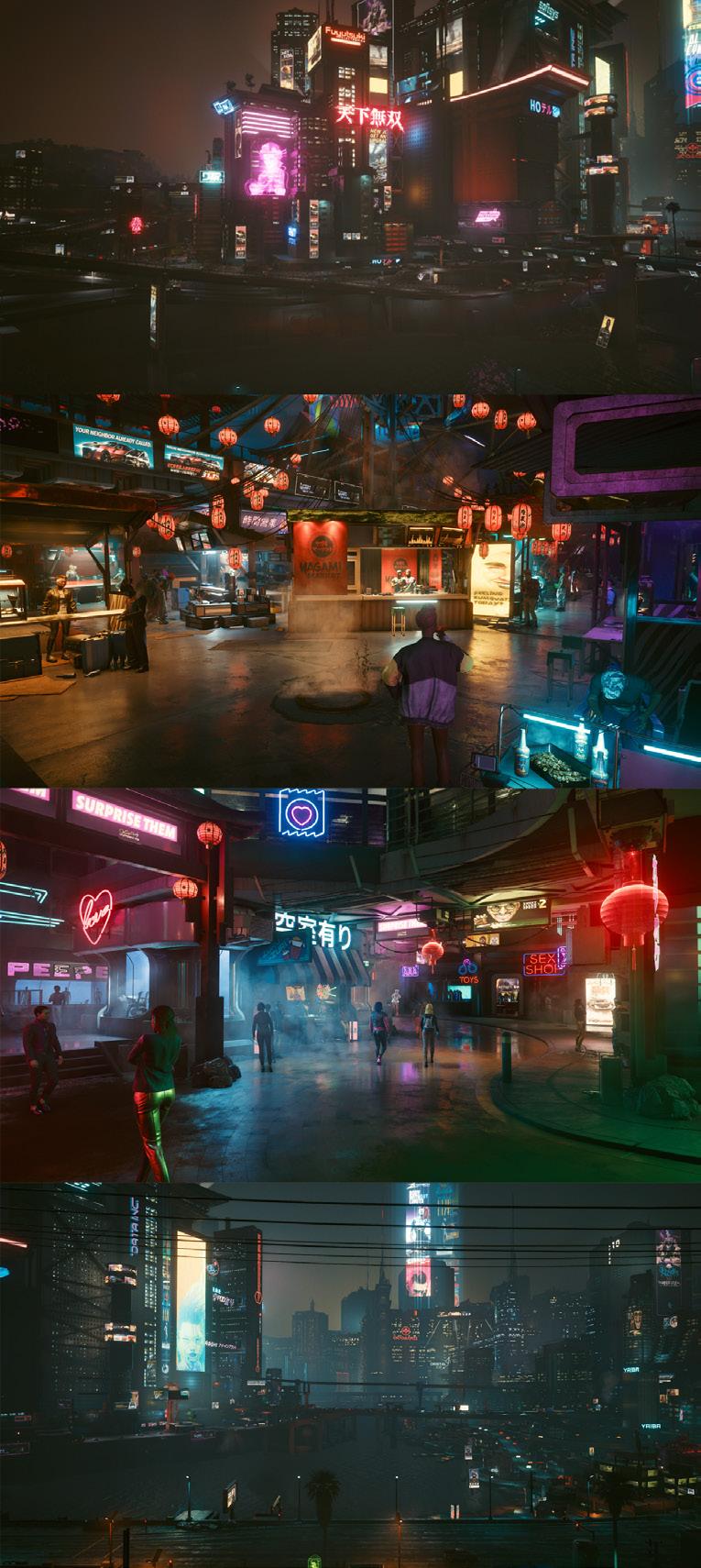
“I worked a lot on the districts and visual design, so designing a city is not easy, that's for sure. So we have six districts and they are all very different, because like in The Witcher you had these areas that had their own personality. We wanted to do the same for Night City so it wouldn't be very boring or repetitive, so when you drive around and explore the city it's exciting. I'll talk about Watson again because it's a very good example. It's a very Asian inspired district so you will see elements there that might remind you of Japan or China for example, so that was a huge inspiration, but we made sure to add this layer of Cyberpunk 2077 to it. You really feel like you're in a real city, because when you walk around Cologne for example you see a mixture of styles you won't see one style, not just in the architecture but even in the cars and what people are wearing” (Jonkers and Hashimoto).
INTERVIEW TOPIC : CYBERPUNK 2077
INTERVIEWER : KAZUMA HASHIMOTO
INTERVIEWEE : MARTHE JONKERS
GAME : CYBERPUNK 2077
SETTING : NIGHT CITY
DISTRICT : WATSON
020
17
This further justifies the simplified game design process by showing that the creation of the game Cyberpunk 2077 is backed up by layers of inspiration and research. This is to prevent monotony and keep the player engaged in a multicultural space. That being said, to maintain uniqueness, the designers apply a final layer which encases the entire game environment into a style unique to its makers. The next question targeted the gameplay experience and levels within the game:
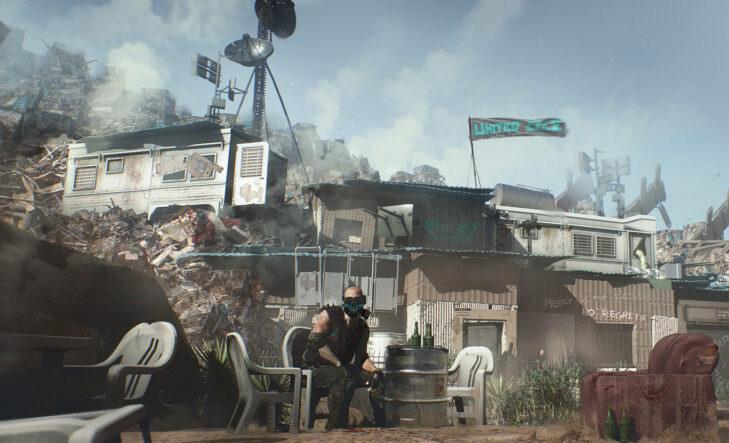
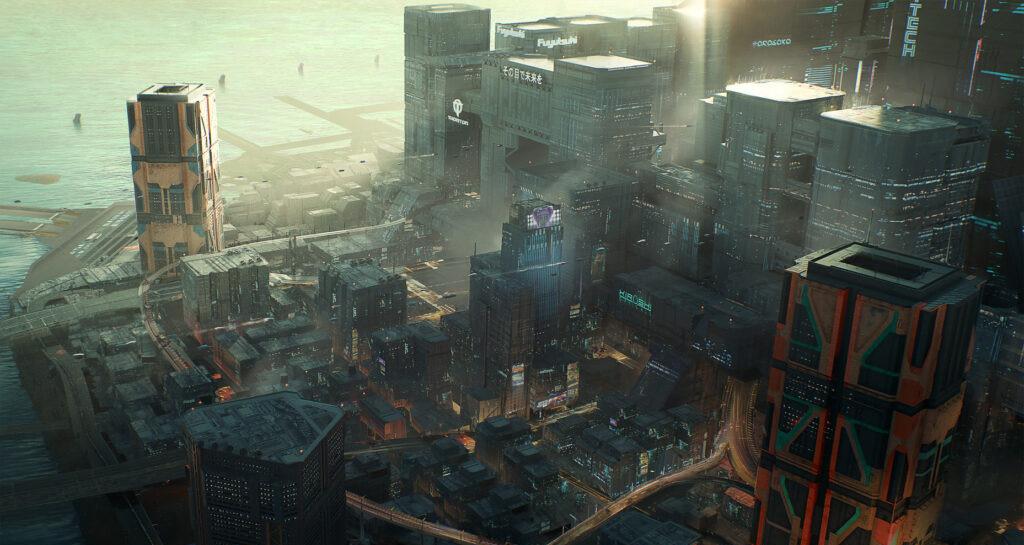
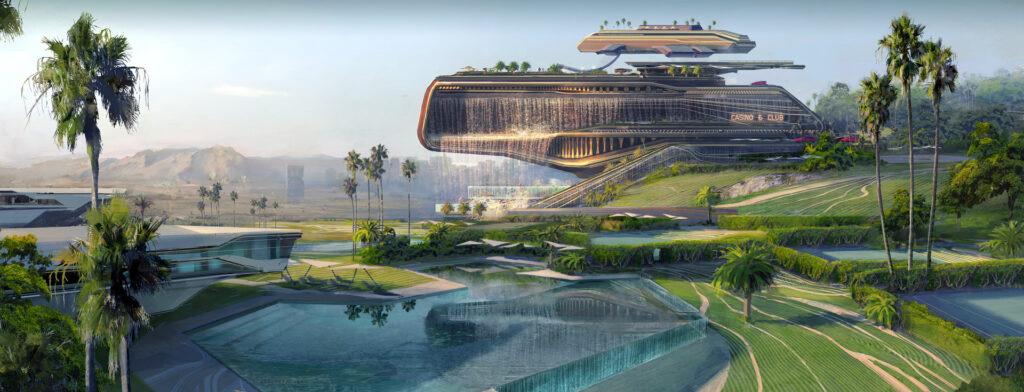
“As for level design, I'm not a level designer but I'll try to answer the question because I work with these guys, but what's really awesome is that you can play each level with very different play styles. Of course, they'll make a lot of different versions and test them. Actually, there is a lot of back and forth between us and them. They'll come to us with a super cool gameplay layout and it'll just be a bunch of grey boxes and we come in and paint it over and make it look like some super cool abandoned warehouse and then the environment team will come in and build it” (Jonkers and Hashimoto).
It can be noticed in Jonkers’ reply that the testing phase was crucial in order to achieve their virtual space. The testing occurs between different departments within the studio with expertise in different sectors of game design. In conclusion, the environment created for Night City of the game Cyberpunk 2077 had a prime focus on a multicultural experience of space while maintaining a single futuristic cyberpunk style.
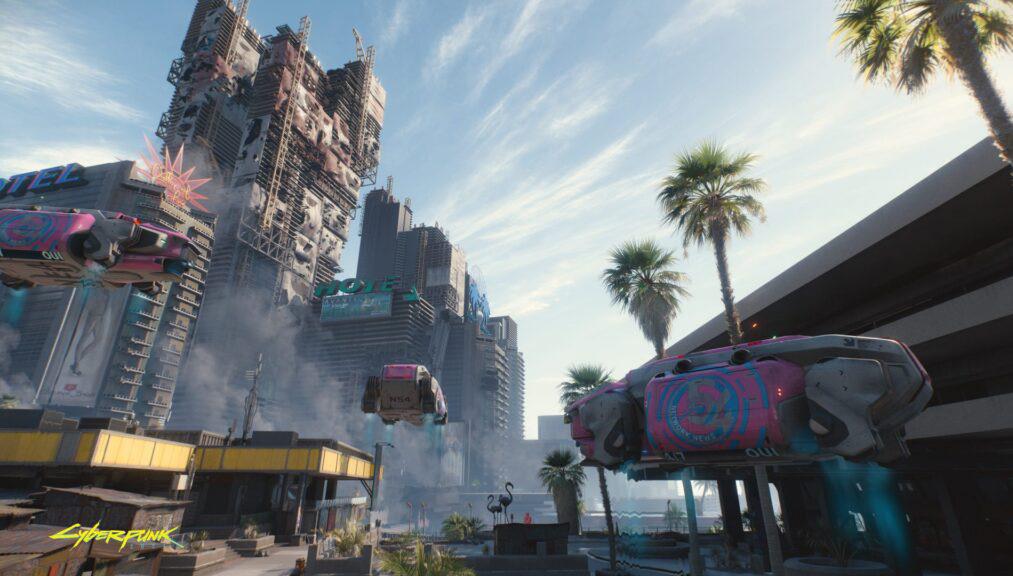
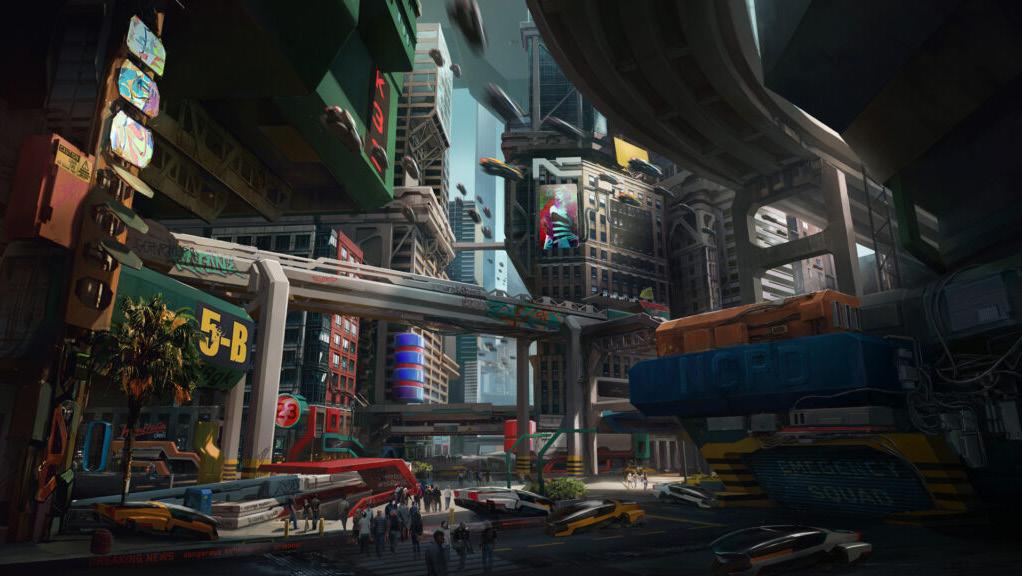
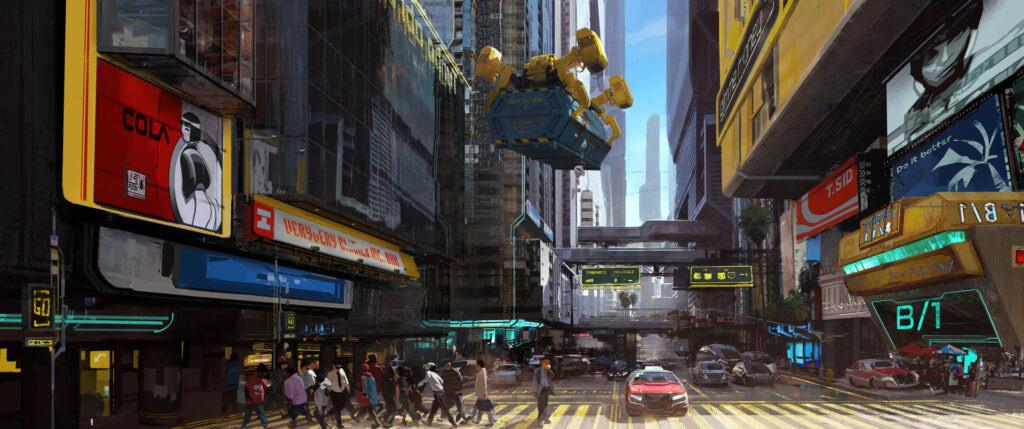
021
18 | CITY CENTER DISTRICT
19 | WATSON DISTRICT
20 | WESTBROOK
21 | HEYWOOD
22 | PACIFICA
23 | BADLANDS
FFXIV (Final Fantasy 14) takes the other side of this coin of comparison. Although the game shares the open world aspect with Cyberpunk 2077, FFXIV is an MMORPG (Massively Multiplayer Online Role-Playing Game). This means that it also incorporates a social space in which players interact with each other, as opposed to Cyberpunk 2077 which is single-player that only involved player-to-NPC interaction (Non-playable character) in terms of the social aspect. An interview with Hiroshi Minagawa, the Art Director of FFXIV, was conducted by Arya Rose from which she asked about the latest expansion (version) of the game Shadowbringers at that time and how every designed area had its unique beauty. To which Minagawa answers:
“We firstly decided on the main colors for each area and created different design plans based on those. Then we asked Mr. Yoshida (FFXIV director and producer) to pick what was closest to his desired image and finalized the visuals. I remember that the most challenging part was the design of II Mheg as it was a typically fantasybased location compared to the locations that had to be different from what had already been seen” (Minagawa and Arya).
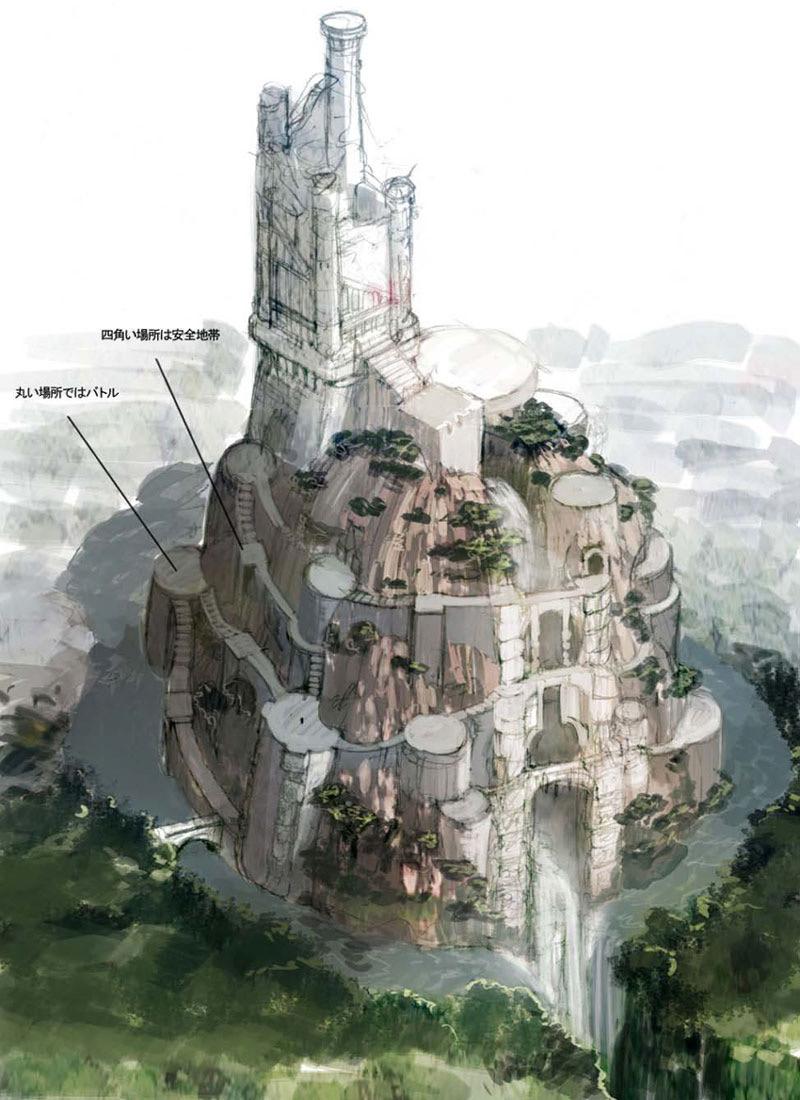
INTERVIEW TOPIC : FINALY FANTASY XIV
INTERVIEWER : ARYA ROSE
INTERVIEWEE : HIROSHI MINAGAWA
GAME : FINALY FANTASY XIV
TYPE : CONCEPT DESIGN
IMAGE : EXPLODED DIAGRAM
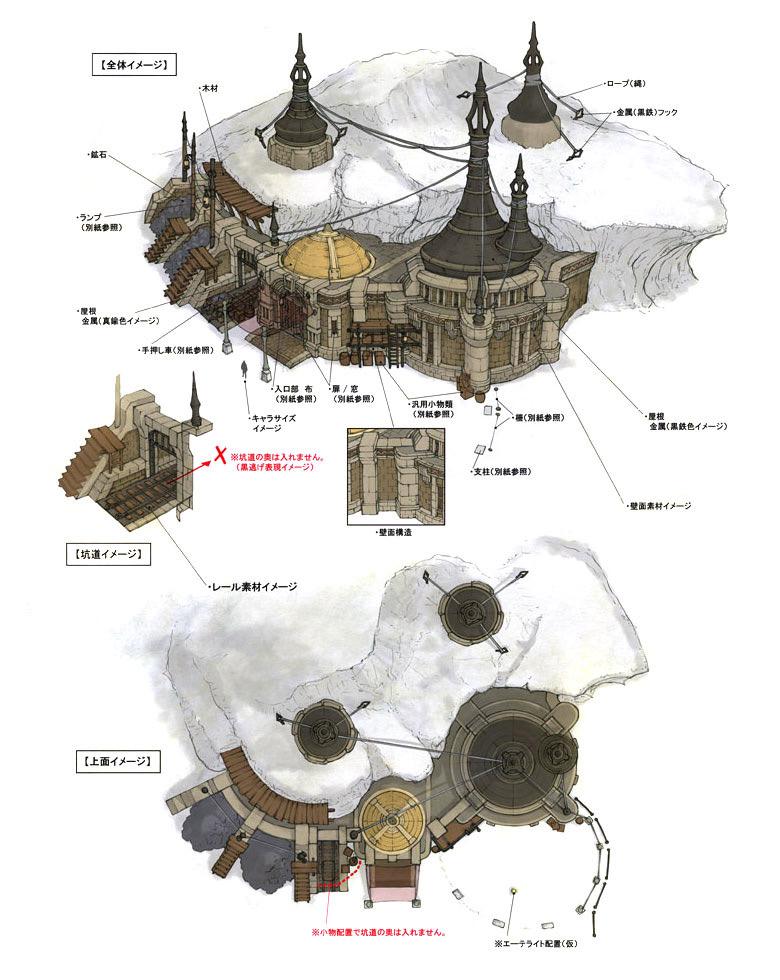
GAME : FINALY FANTASY XIV
TYPE : CONCEPT DESIGN
IMAGE : COMPLETED CONCEPT
It can be noted through this that one of the major driving aspects is color, as Minagawa describes the workflow of designing the areas as one that respects a color palette. This, however, does not dig deep enough to understand the spatial quality of the game.
022
25 24
A second interview, this time with Naoki Yoshida himself, by Joseph C. Lin in which he asks Yoshida about real life locations that inspired the architecture and landscape of FFXIV. Yoshida says:

“There isn’t a specific thing or location we can reference, but we focused on ‘gothic high fantasy’ as the central theme for the artwork and in-game modelling. We also made sure to visually accentuate the dark and light areas with pronounced contrast to come up with a novel look. As for the storyline we moved towards dark fantasy which is reflected in each scene. That is another new challenge we’ve put forth for ourselves. All in all, this is a very unique realm created through the interpretations and imaginations of a core development team that is located in Japan” (Lin and Yoshida).
LOCATION : ISHGARD
AREA : EXTERIOR
In other words, the video game space of FFXIV did not use any particular locations as a form of reference. However, the reference used here is an architectural style, namely gothic architecture, which was then merged with the imagination and creativity of the design team. What can be concluded from this investigation is that the methods used in designing a virtual space may be different in some parts or similar in others, but will almost always result in a
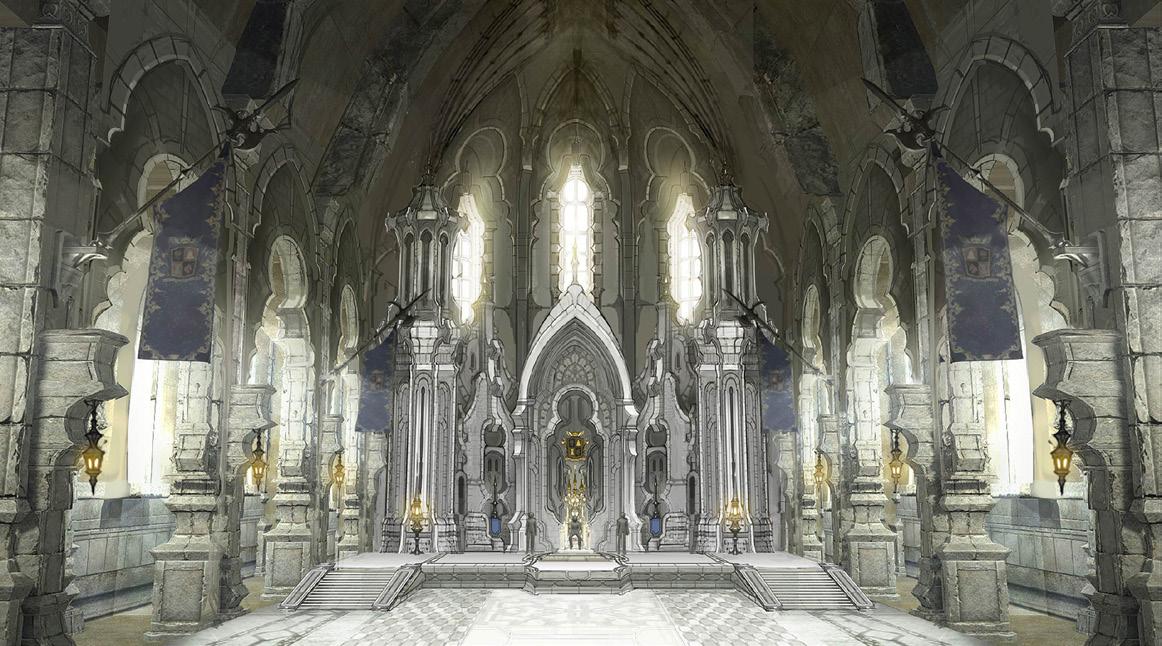
LOCATION : ISHGARD
AREA : INTERIOR
different outcome. Two open-world games. On one side, a game space that evokes a futuristic yet cultural experience in a space that is highly dependent on technology. On the other side, a game space that reflects a gothic, dark yet fantasy-based experience with a prime focus on magic. Both achieved a successful interpretation of a spatial experience with completely different styles.
023
GAME : FINALY FANTASY XIV
GAME : FINALY FANTASY XIV
INTERVIEW TOPIC : FINALY FANTASY XIV
INTERVIEWER : JOSEPH C. LIN
26 27
INTERVIEWEE : NAOKI YOSHIDA
Furthermore, a thesis by Ana María García Linares explores the architecture of the game BioShock Infinite’s Columbia through multiple case studies of buildings within the game. The game’s setting is in the fictional city Columbia, which is shown to be subtracted from the United States and is floating in the sky. The entrance to the main city features buildings of the neo-classical style, eventually leading to a
lighthouse. Ana María sketches this part of the circulation as a form of analysis of what could have been the thought process behind the design of the setting (Garcia). Through this analysis, the methods and strategies behind the creation of a structure, which in this instance is a lighthouse, help understand what could possibly have been the thought process of the game designer.
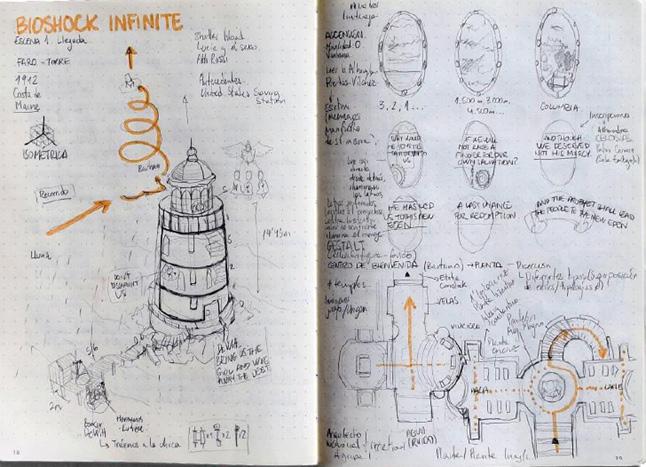
GAME : BIOSHOCK INFINITE
LOCATION : PORTLAND
SKETCH : STRUCTURE AND CIRCULATION
28 29
GAME : BIOSHOCK INFINITE
LOCATION : PORTLAND
GRAPHICS : COLLAGE OF THE DIAGRAMED LIGHTHOUSE
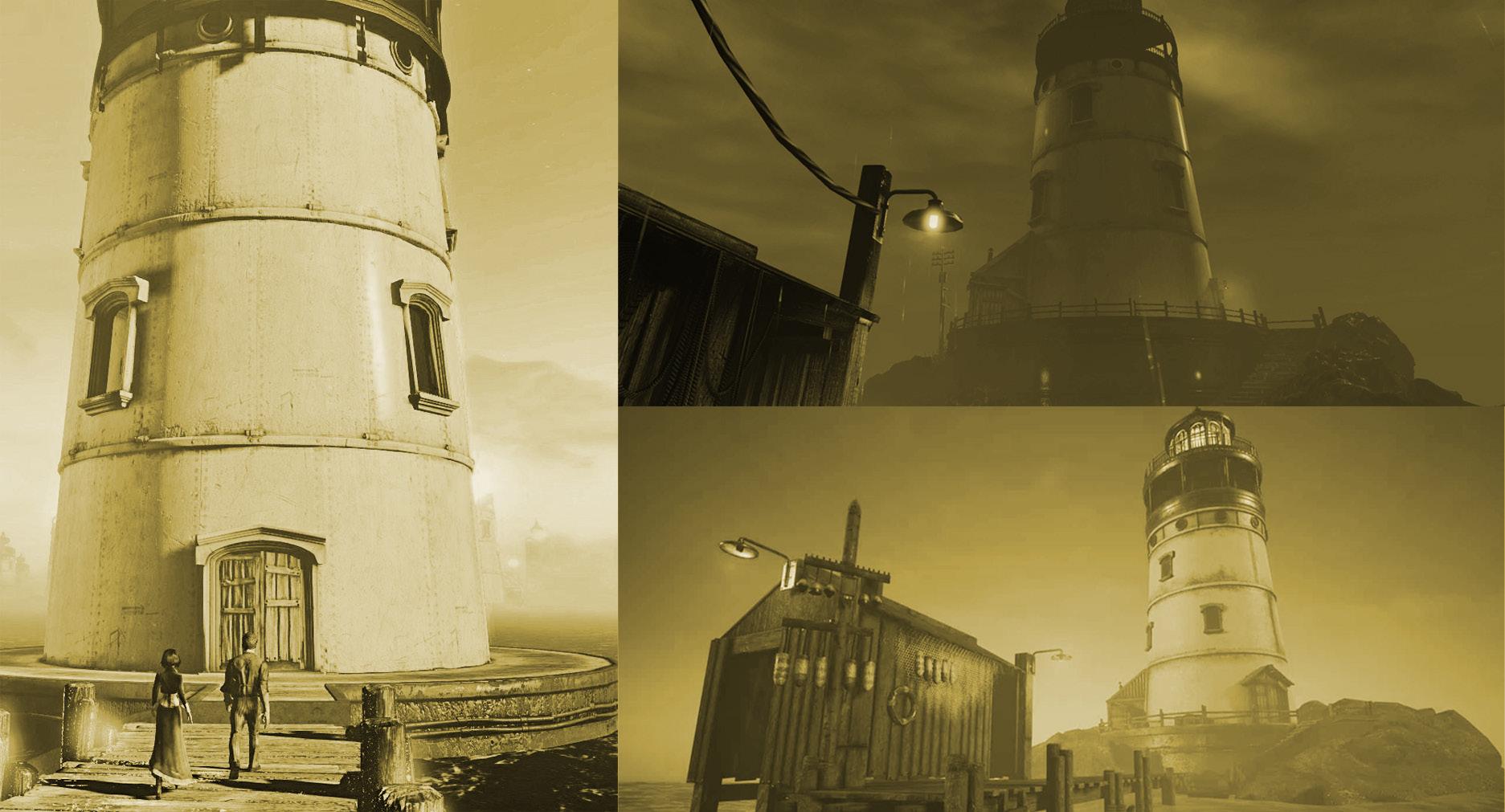
024
ARCHITECTURE
Game Maps and Map Planning
Maps have been used to navigate the earth since the beginning of history. Nowadays, humans reach their destinations through means of mapping devices such as the GPS (Global Positioning System), allowing them to reach and explore spaces they longed to visit or constantly visit as a routine. This tells that any space that can be navigated to or through, a map can be made for it. This concept is without surprise applicable to the world of video games. Many genres include the map as an essential element within the game. This is usually applicable for game genres like adventure, role-playing (RPG), and shooting due to the need of navigating through the virtual space. Through playing video games of different genres and map layout and design, an understanding of how they are developed and used can be established. In order
to best define the maps of a video game and investigate their creation, categorizing them into different types would be optimal to organize the thoughts, ideas, and studies behind each category.
Due to the user-centric nature of video games, a survey conducted by this research interrogated several groups of individuals on the importance of the map in a game. However, the question was primarily targeting their opinion as a preference of whether to have the map or not. More than sixty percent had agreed that they prefer to have a map while playing the game, as opposed to blind exploration. However, the absence of the map and focus on blind exploration was preferred by a considerable amount of respondents.
Through the survey's results, it can be inferred that maps are indeed an important element to the majority of the players. However, a significant percentage prefers to blindly explore the space without a map. This shows that although maps may be essential to many players and used in a large variety of video games, blind exploration is a concept that still appeals to a certain amount of players and is viable in some games.
SECTIONAL MAPS
A map type that is usually integrated in two-dimensional games, sectional maps is the category of any map in which the representation is in the form of a section cut of the space. This implies that all the important information relevant to the gameplay and progression of the game can be shown by simply creating a minimized and more simplified version of the game space. RPG’s (Role-Playing games) and indie games are the most common genres that use maps of this category, though typically only applicable when gameplay is two-dimensional.
Ori and the Blind Forest is a two-dimensional role-playing game in which the player takes the role of Ori, a small mythical creature, under the purpose of restoring light energy to the tree of life. Over the duration of the game’s story, the player may collect resources to increase Ori’s power to facilitate future gameplay challenges. These resources are scattered around the forest and are to be hunted by the player by locating them on the map and navigating towards them. However, this is not always possible, as the game features an additional mechanic. The mechanic involves hiding or fading all unexplored spaces and their resources on the map. This is an important aspect should the game designer wish to implement a sense of mystery and curiosity of exploration.
025
MAPS B
INVESTIGATING IMPORTANCE OF GAME MAPS 61.76% 38.24% BLIND EXPLORATION
| SURVEY
30
GAME : ORI AND THE BLIND FOREST
MAP : ENLARGED
GAME : ORI AND THE BLIND FOREST
MAP : FOCUSED
MAP TYPE : SECTIONAL
AREA : SUNKEN GLADES
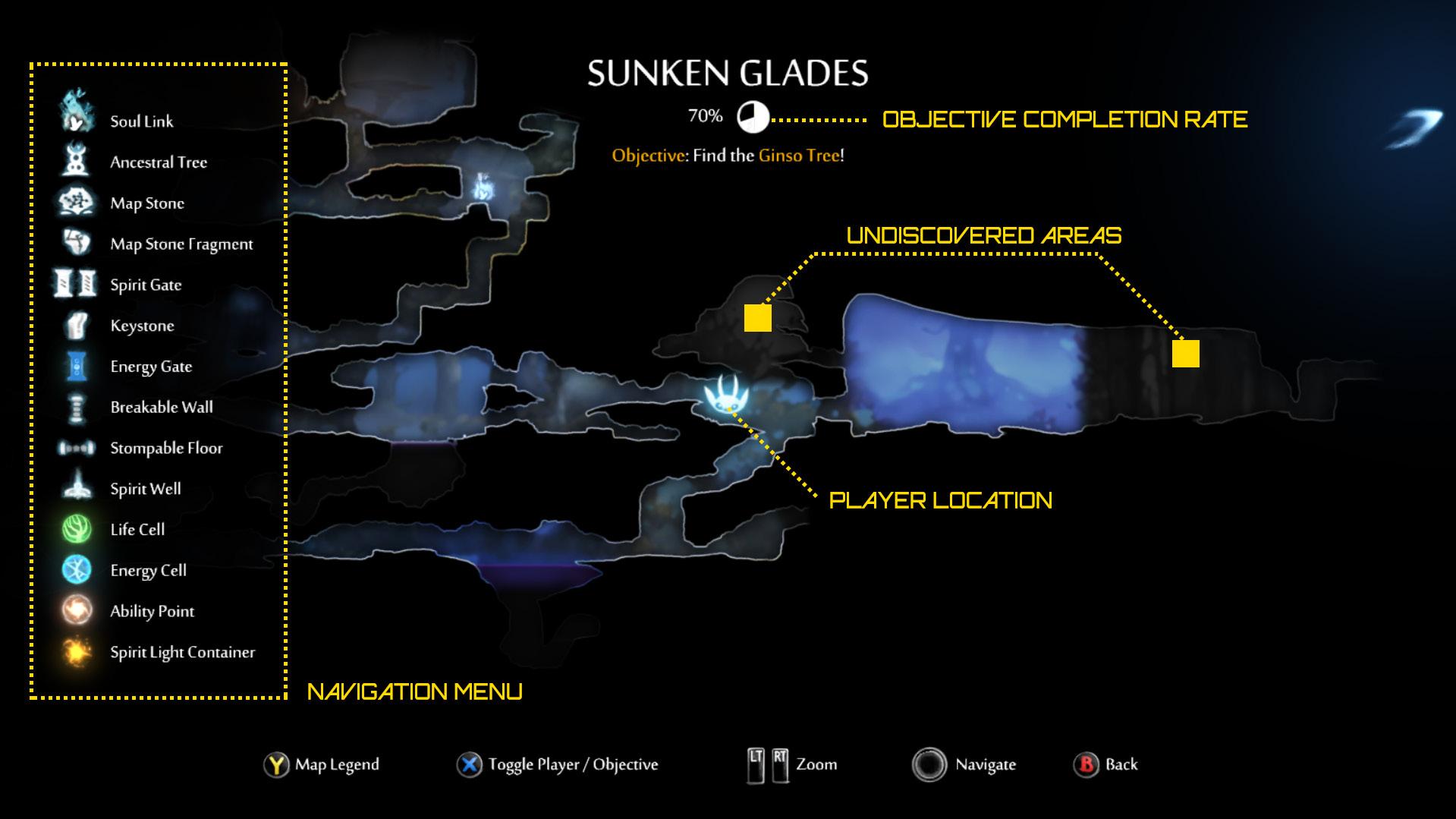
31 32
GAME : ORI AND THE BLIND FOREST
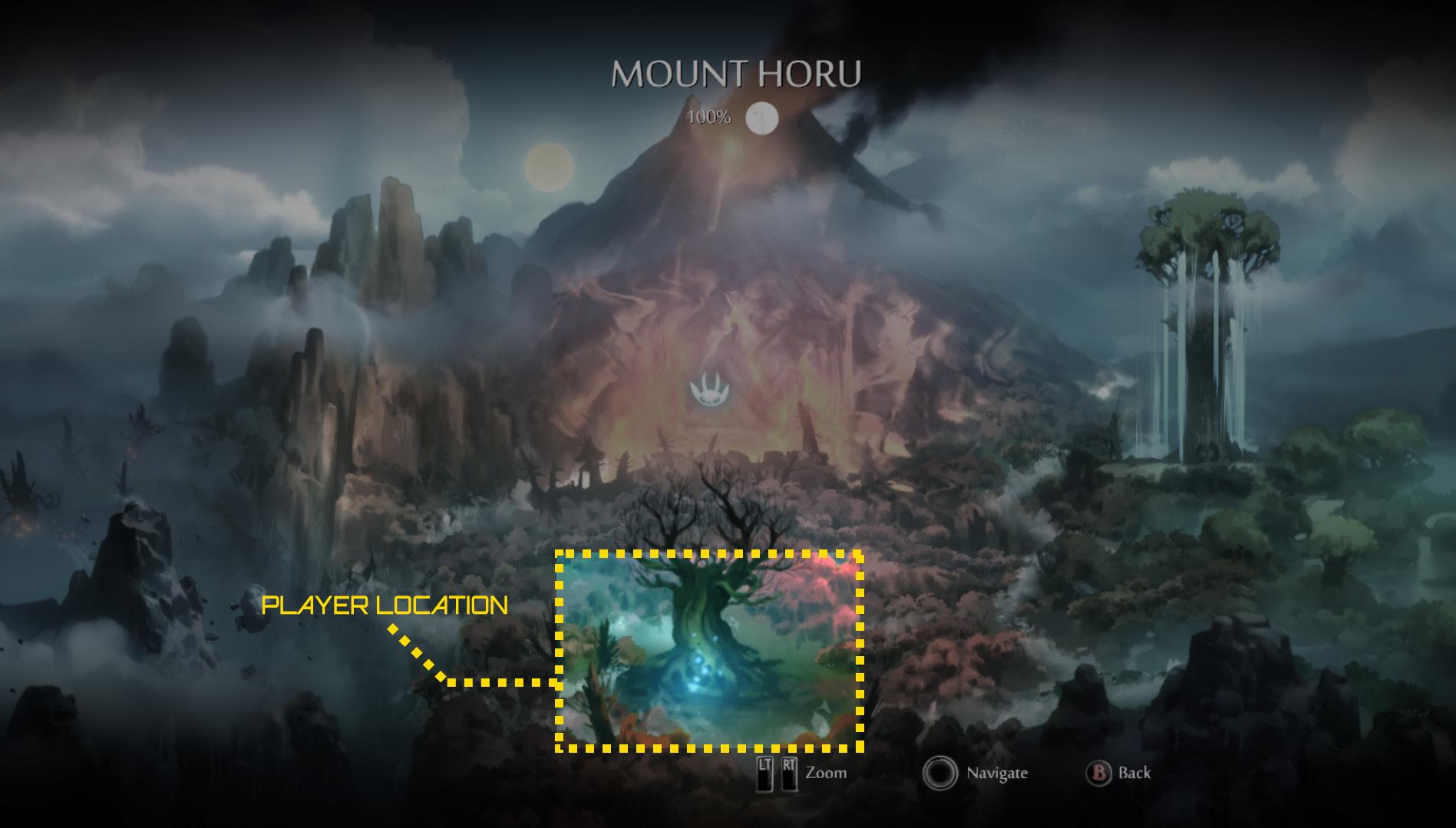
PHOTO : REFLECTED GAMEPLAY LOCATION FROM MAP
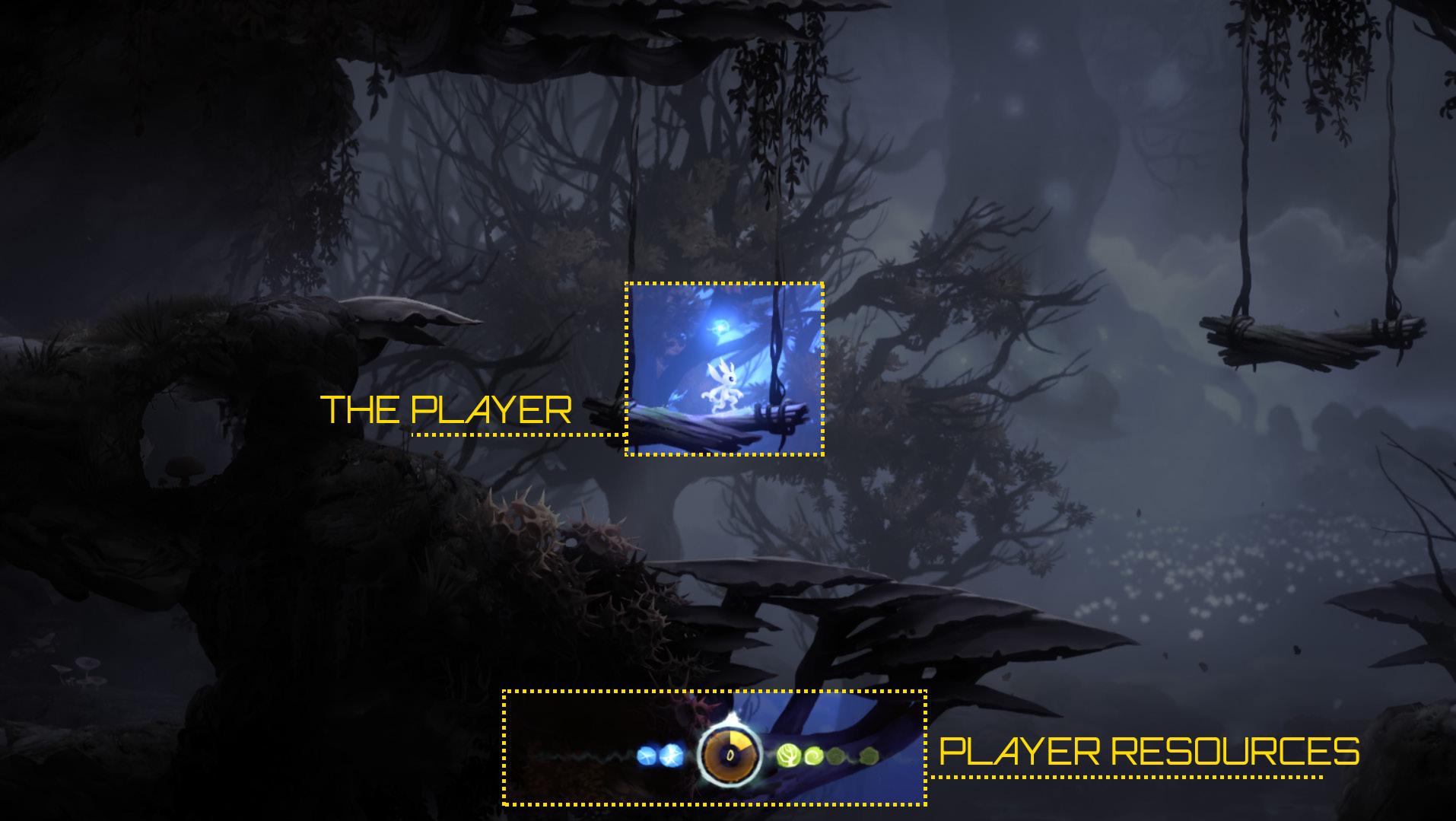
026
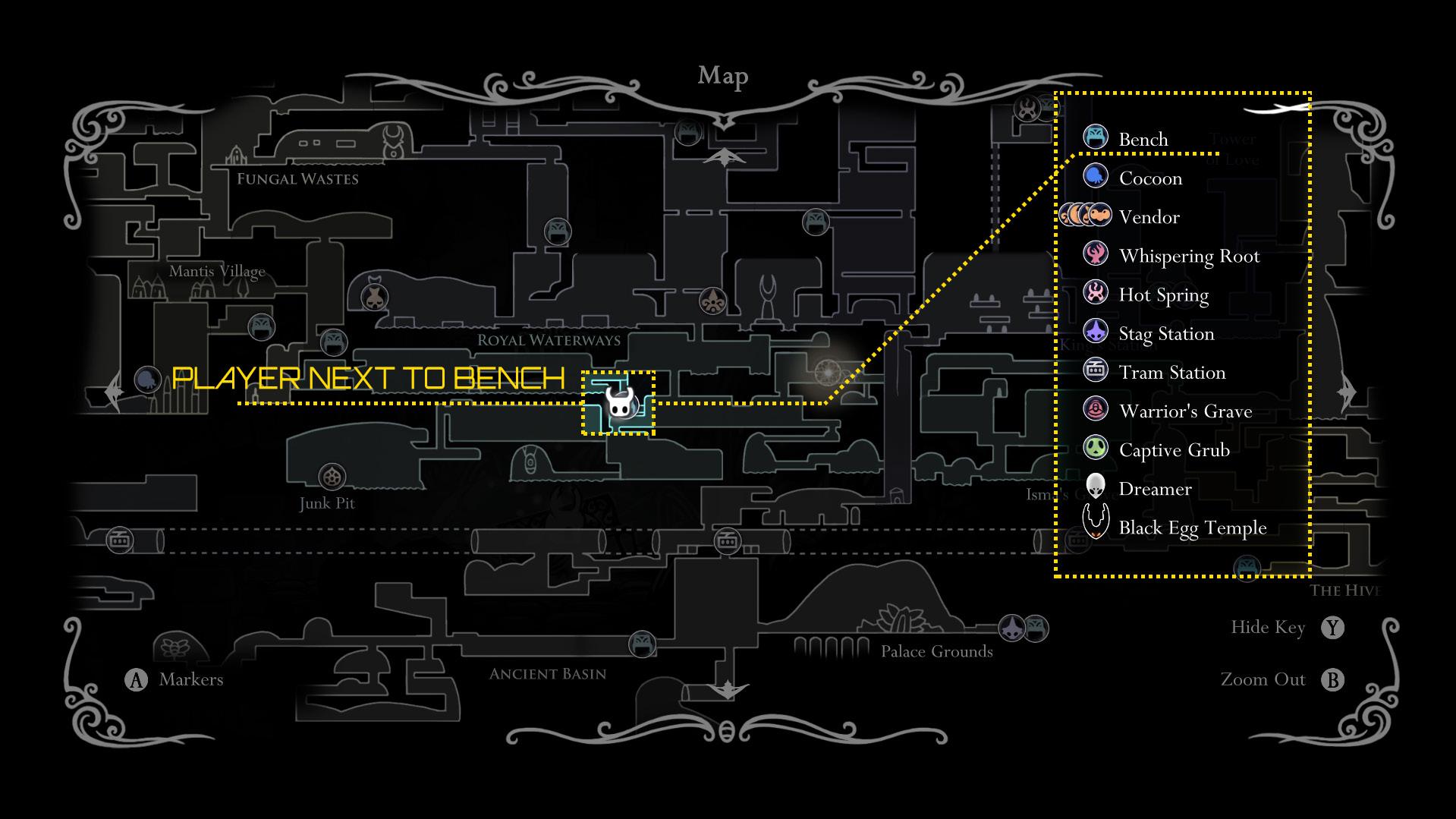
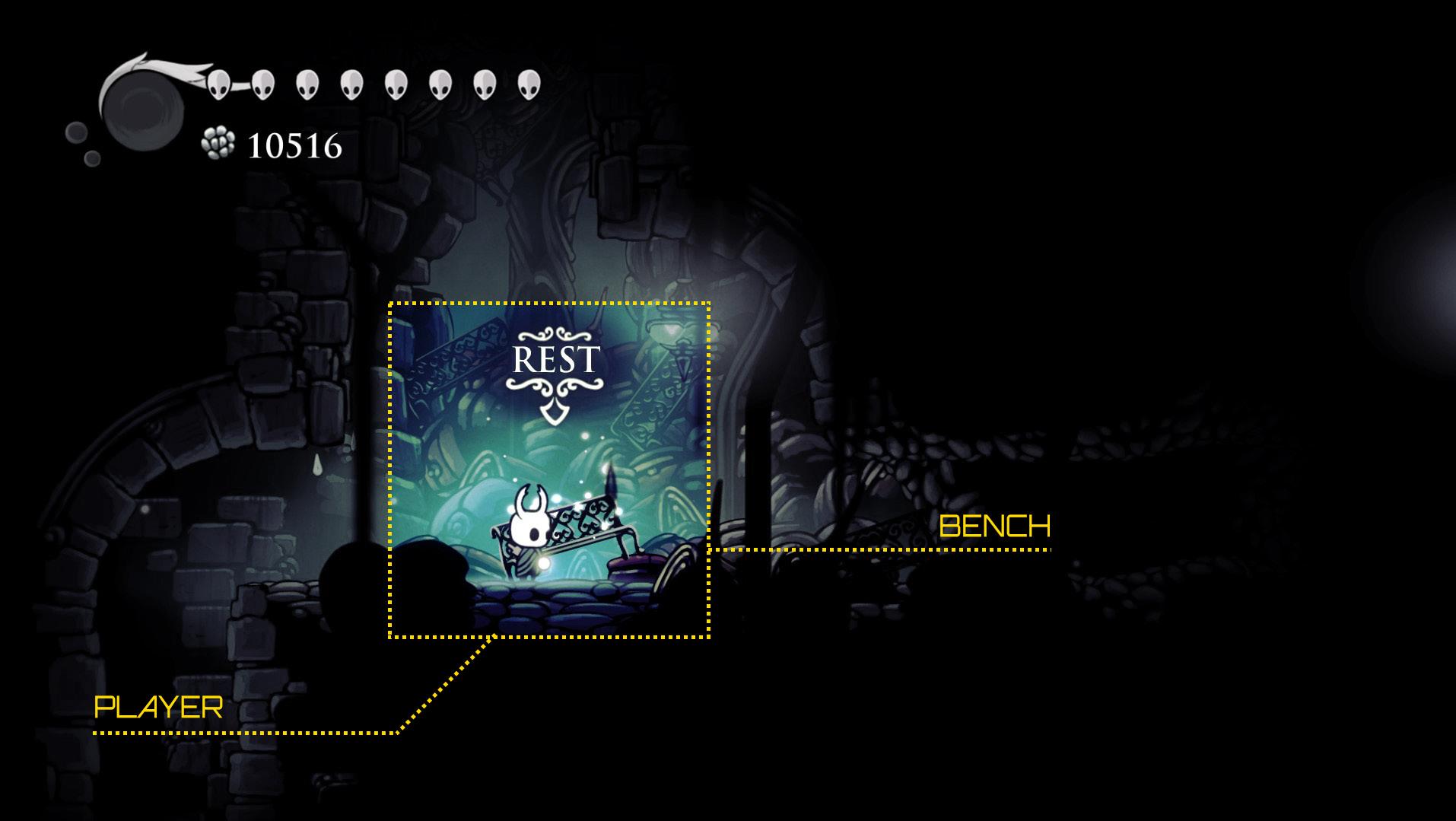
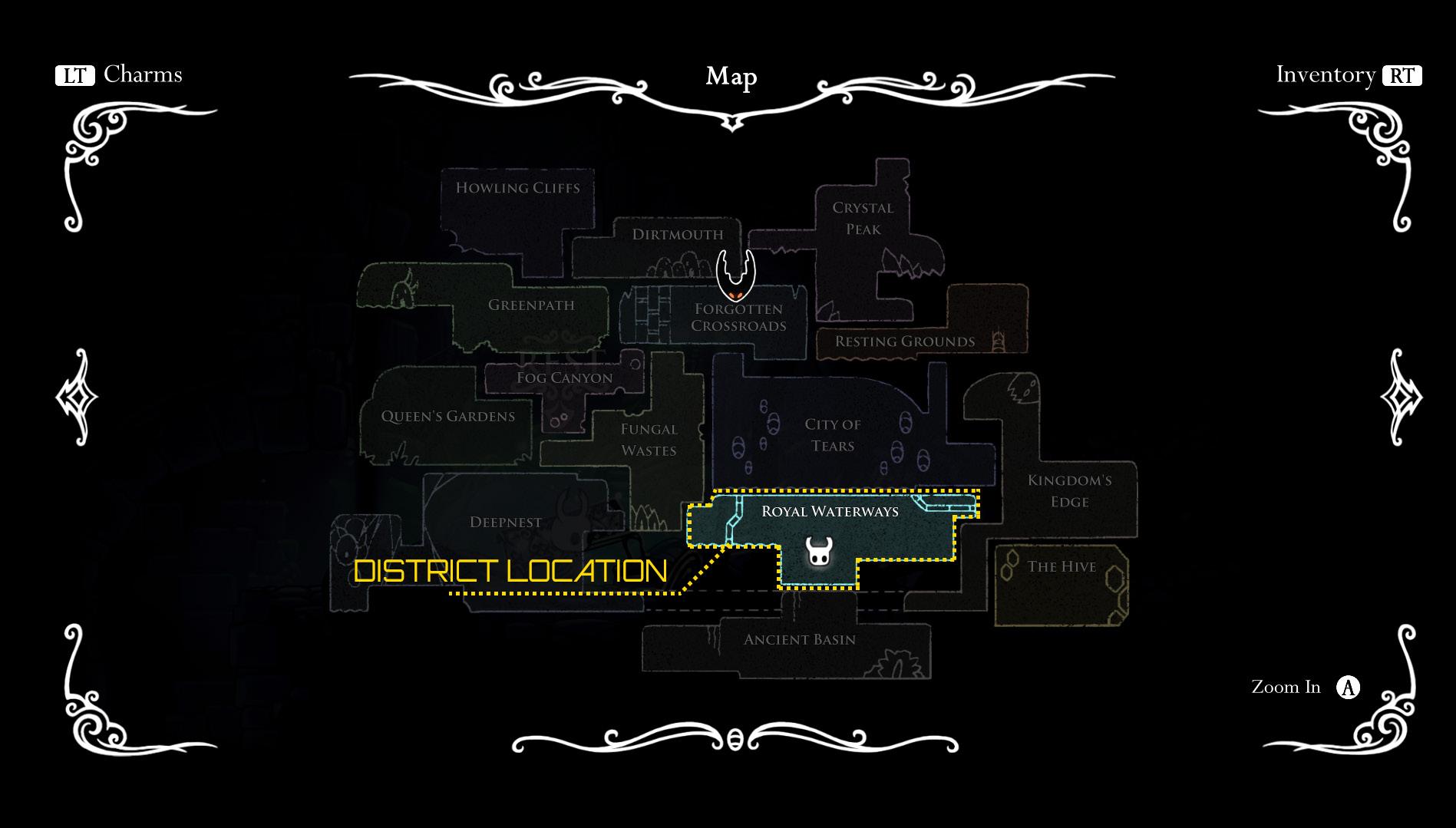
027 GAME : HOLLOW KNIGHT MAP : ENLARGED GAME : HOLLOW KNIGHT MAP : FOCUSED MAP TYPE : SECTIONAL AREA : ROYAL WATERWAYS GAME : HOLLOW KNIGHT PHOTO : RELATION OF PLAYER TO MAP 33 34 35
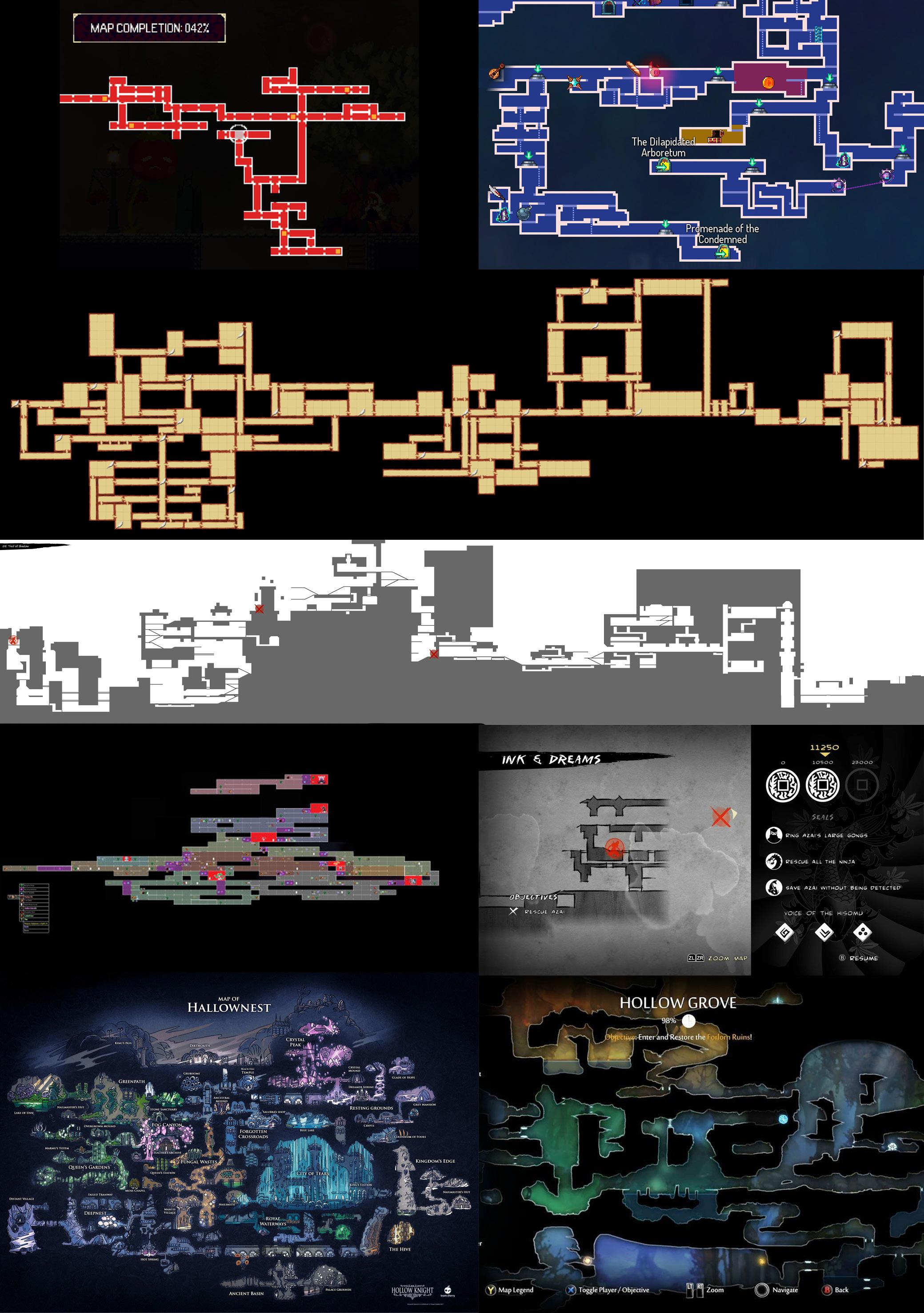
TACTICAL MAPS
The same idea can be translated to war games, MOBA’s (Multiplayer Online Battle Arena) and city builders. However, the purpose of the map in these genre differs, as they are meant for the sake of conquest and planning as a third person watching over the virtual space (Minassian). Which in this case shall put them in the category of Tactical Maps. In this particular type, the map is often the video game itself, which emphasizes the tactical aspect and the analytical approach the player the player should think about in order to progress in the game. The format often follows a grid-like structure on which units shall move on while maintaining a three-dimensional experience. In reality, this category of maps can be considered the intermediate between the two-dimensional and the three-dimensional. This is due to the mixture of 3D graphics with 2D structure.
Age of Empires is a classic RTS (RealTime Strategy) city-builder game in which the player begins with a handful of hunters and gatherers. In order to develop a society and eventually a civilization, the player must manage resources and gather them from around the map while building his or her base. This also involves raising armies and moving them around maps to discover new land, or invade inhabited land. This process is facilitated through the map and its full integration with the gameplay allows the player be the overseer of the environment and all of its resources.
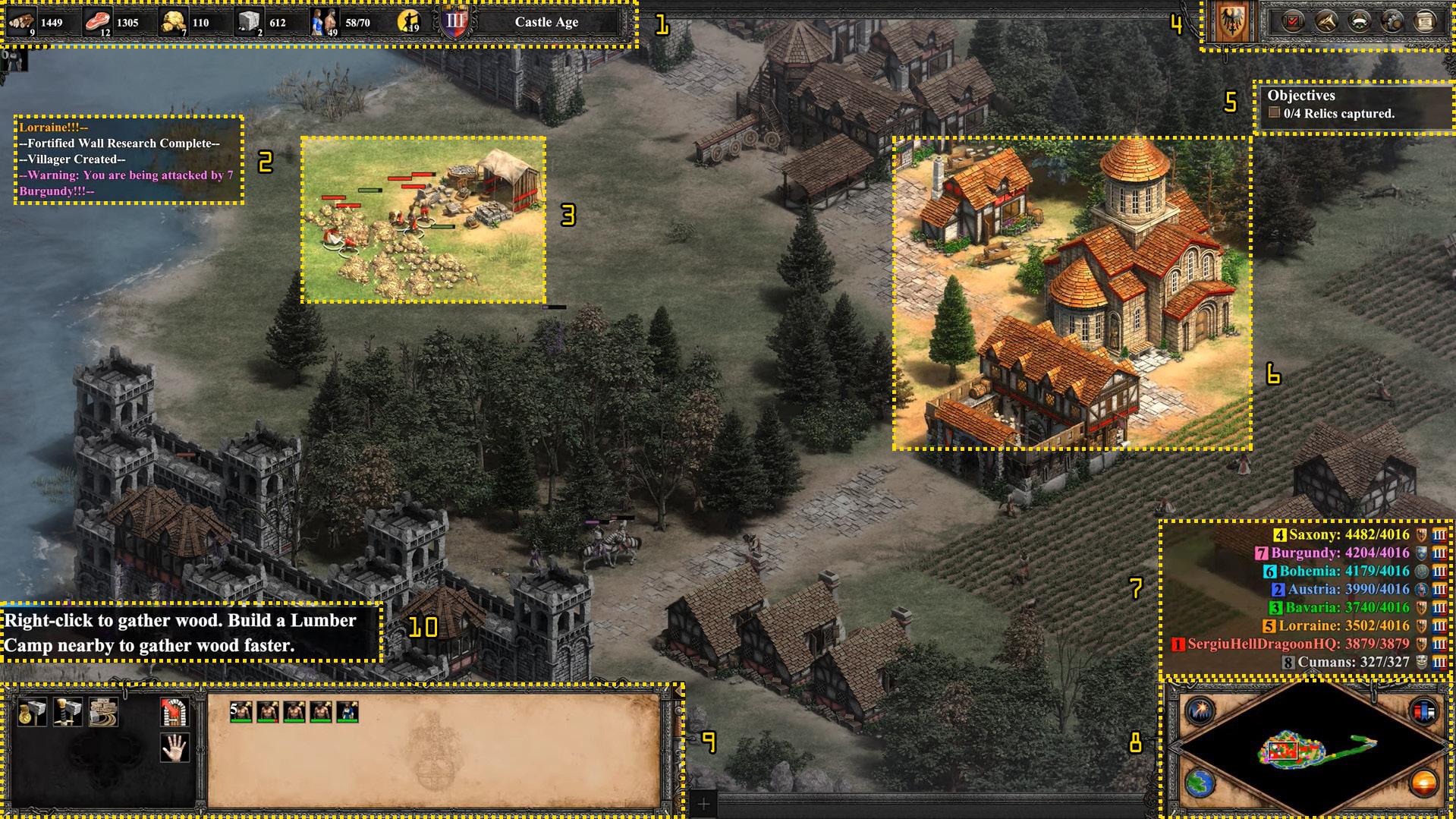
029
1 : RESOURCE BAR (SHOWS RESOURCES)
: AGE OF EMPIRES
TYPE : CITY BUILDER
TYPE : TACTICAL FOCUS : USER INTERFACE 37 LEGEND: 4 : GAME SETTINGS AND OPTIONS 7 : RESOURCE SCORE (PER PLAYER) 2 : NOTIFICATIONS (SHOWS UPDATES) 5 : OBJECTIVES TAB 8 : MINI-MAP 3 : WORKER UNITS (CONTROLLABLE) 6 : BUILT STRUCTURES (BY WORKERS) 9 : ACTION BAR (USED TO CONTROL UNITS) 10 : GAME TIPS
GAME
GAME
MAP
38 GAME : AGE OF EMPIRES
GAME TYPE : CITY BUILDER
MAP TYPE : TACTICAL
FOCUS : MAP GRID
The same idea applies to MOBA's such as League of Legends and DOTA 2. Although with a more minimal approach to the interface, it can be seen in the diagram below that the tactical aspect, the grid, and multiple resource tabs are essential parts of the gameplay.
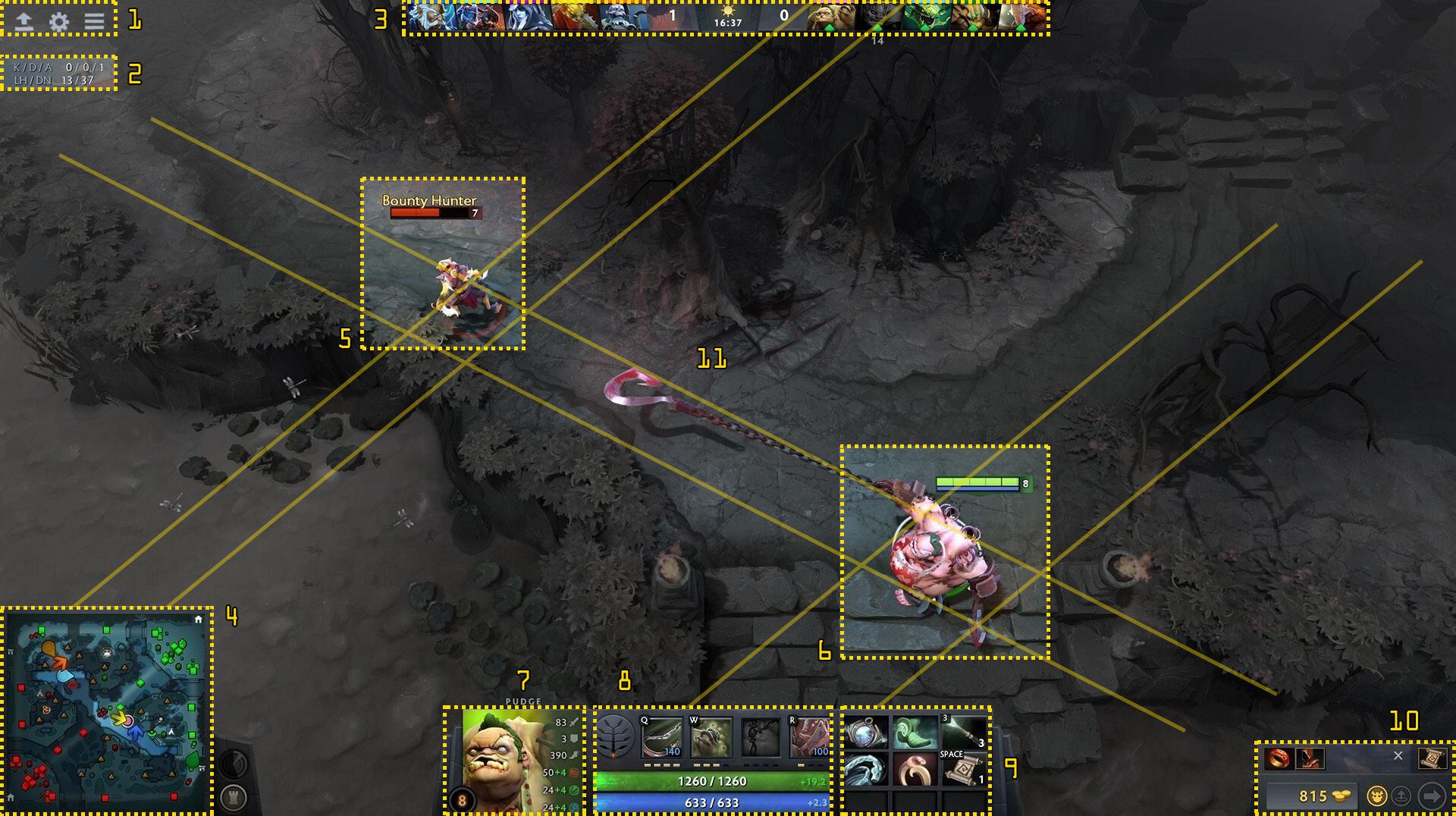
GAME : DOTA 2
GAME GENRE : MOBA
MAP TYPE : TACTICAL
FOCUS : MAP GRID AND INTERFACE

030
1 : GAME SETTINGS AND OPTIONS
5 : ENEMY PLAYER 9
PLAYER'S ITEMS 2 : PLAYER SCORES 6 : PLAYER'S CHARACTER 10 : PLAYER GOLD AND SHOP 3 : PLAYER CHARACTERS 7 : PLAYER'S STATS 11 : DIRECTED ATTACK BY PLAYER FOLLOWING GRID 4 : MINI-MAP 8 : PLAYER'S ABILITIES 39
:
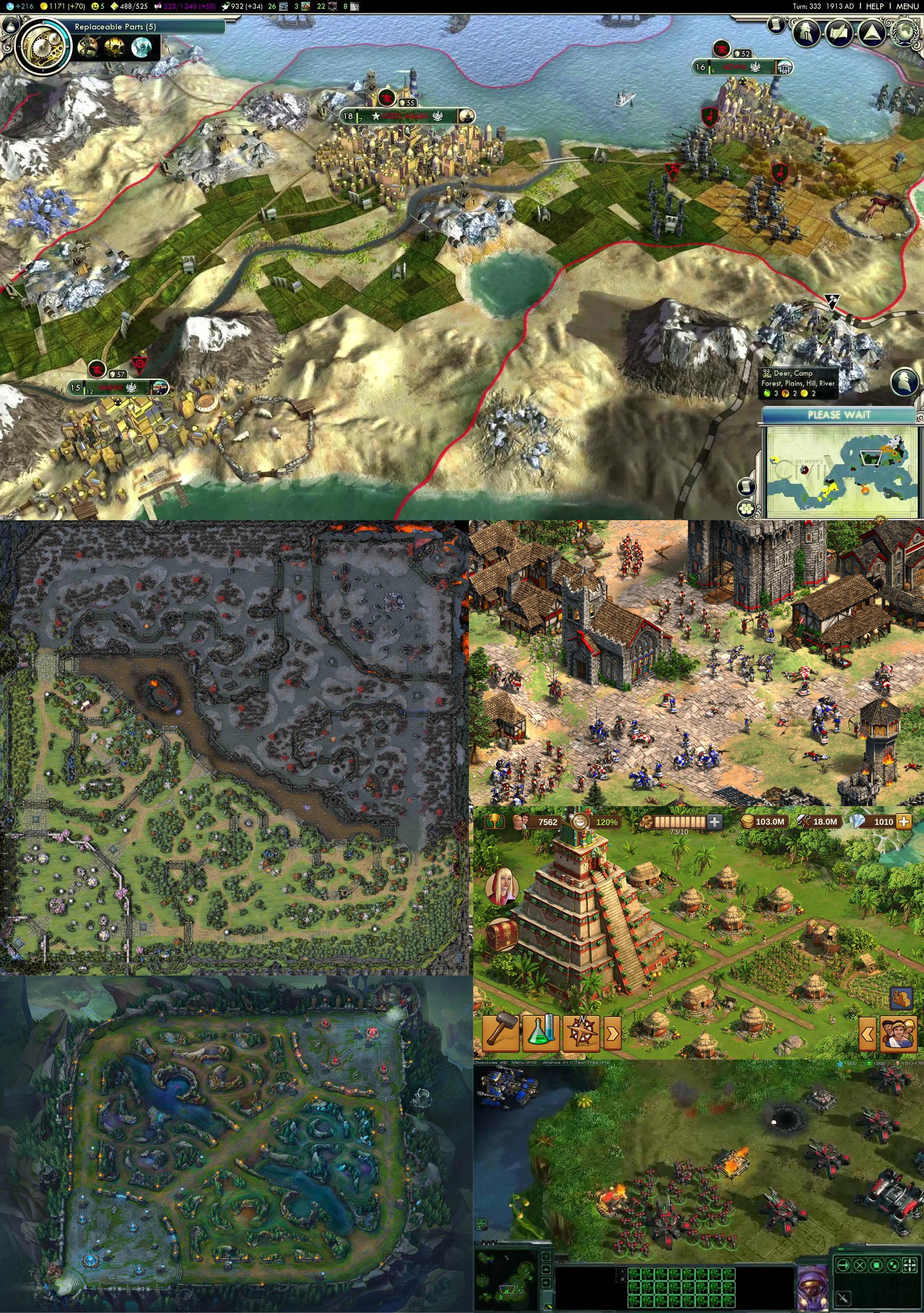
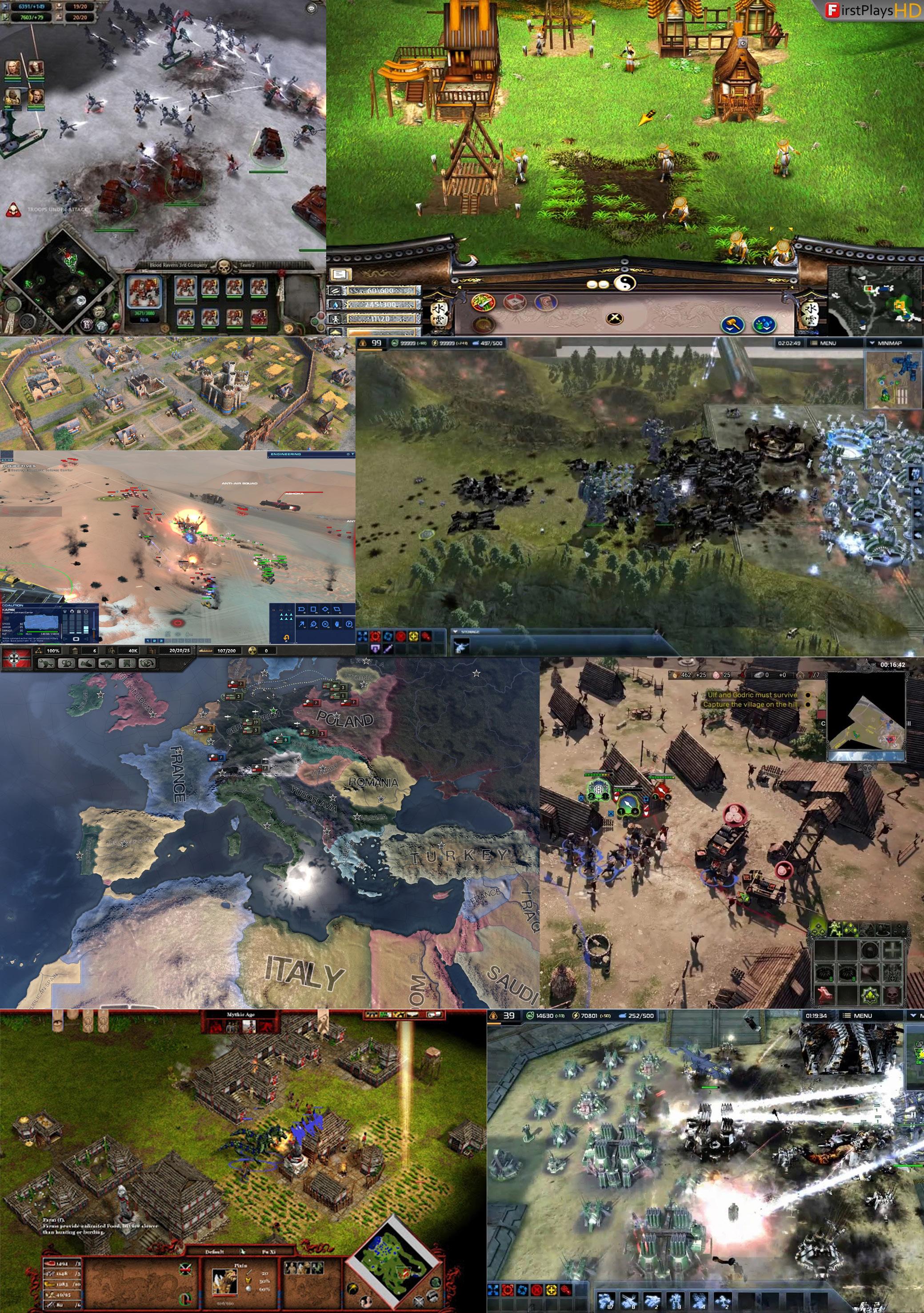
REGIONAL MAPS
As a very common ,if not the most common, type of maps, regional maps cover many different genres of video games. This category is often tied with three-dimensional, open-world, MMORPG’s (Massively Multiplayer Online Role Playing Games), shooting, and action games. For the sake of video game map categorization, regional maps in this case do not refer to the common naming of real life maps. This category of video game maps can be described as maps that are large in scale. Architecturally speaking, the format of such maps may seem similar to that of floor plans in some cases. If the representation of the maps shows a large town, a city with its districts, a country, or even an entire universe, then it shall fall under the category of “Regional Maps”
Large scale regional maps can be attributed to the MMORPG Aura Kingdom for instance. The player experiences the story of the game as the main character while travelling to and from different locations around the game’s world. The developers of the game release new content and locations every few months for the player to explore and play part of the story in. In other words, it is a large ever-expanding map that not only is used to navigate a space, but also maintains the curiosity of the players and their hunger for more areas to explore.

033
GAME : AURA KINGDOM GAME GENRE : MMORPG MAP TYPE : REGIONAL MAP SCALE : MAXIMUM 42
43 44
GAME : AURA KINGDOM
GAME GENRE : MMORPG
MAP TYPE : REGIONAL
MAP SCALE : INTERMEDIATE
GAME : AURA KINGDOM
GAME GENRE : MMORPG
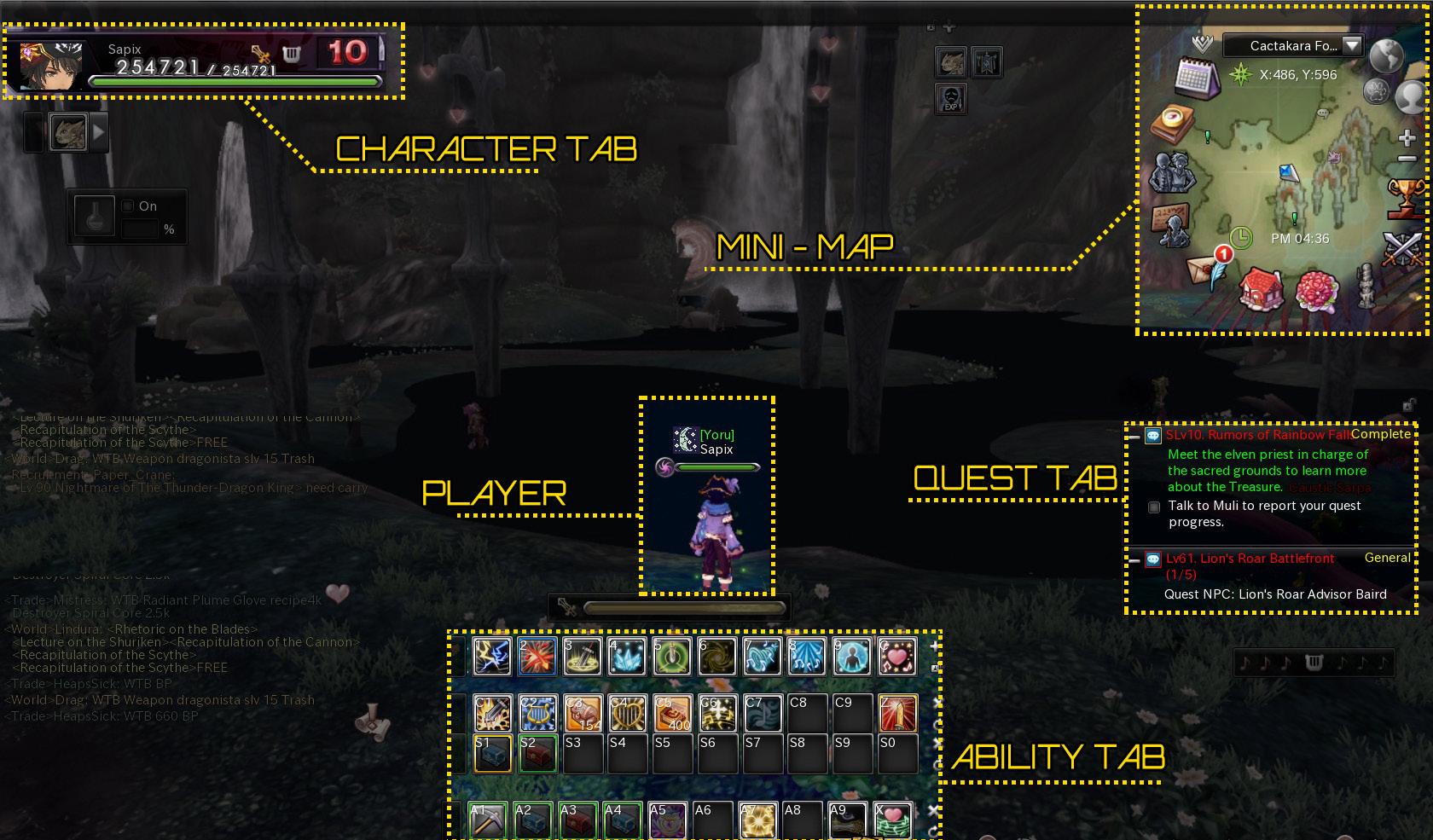
MAP TYPE : REGIONAL
MAP SCALE : MINIMUM
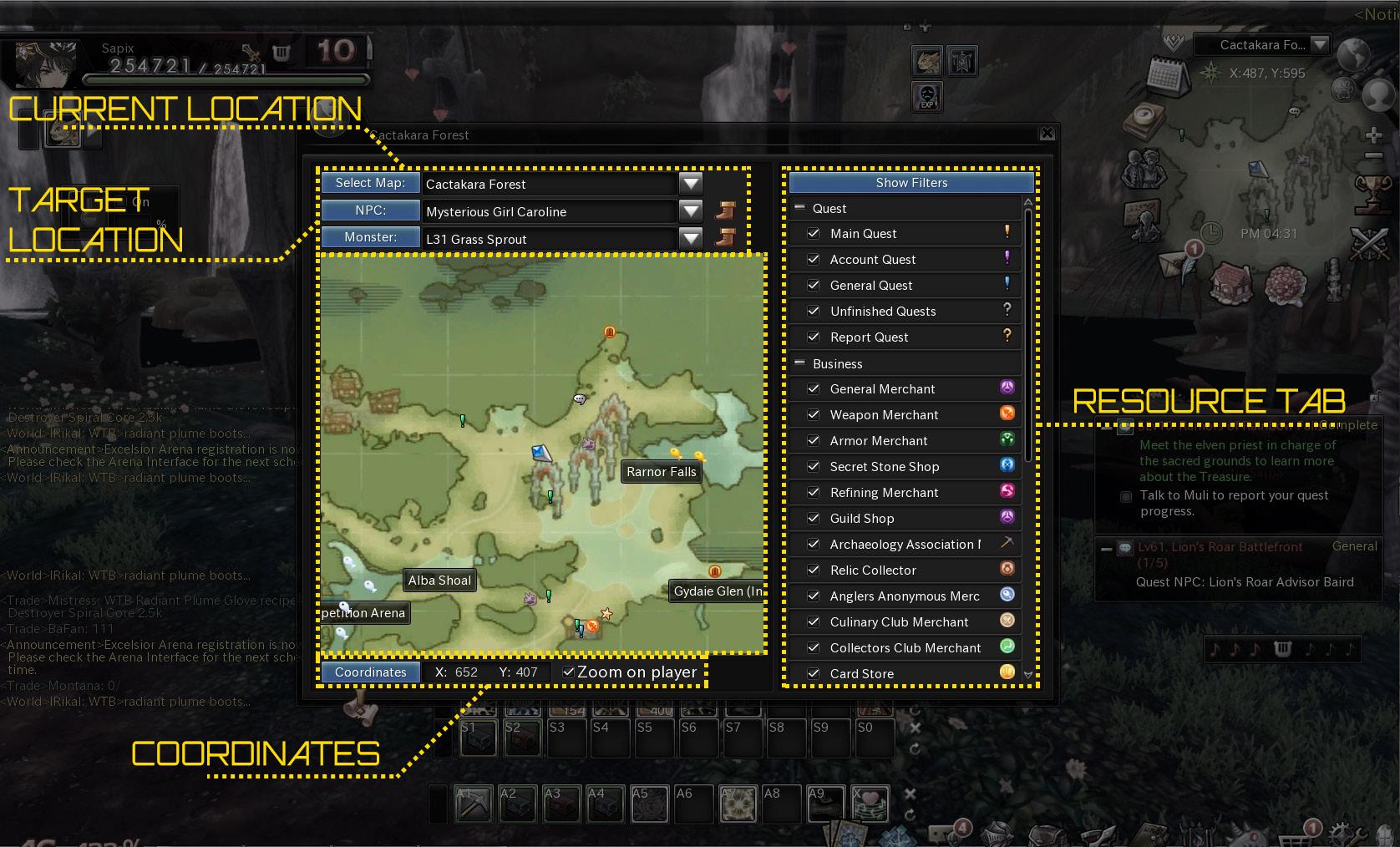
034
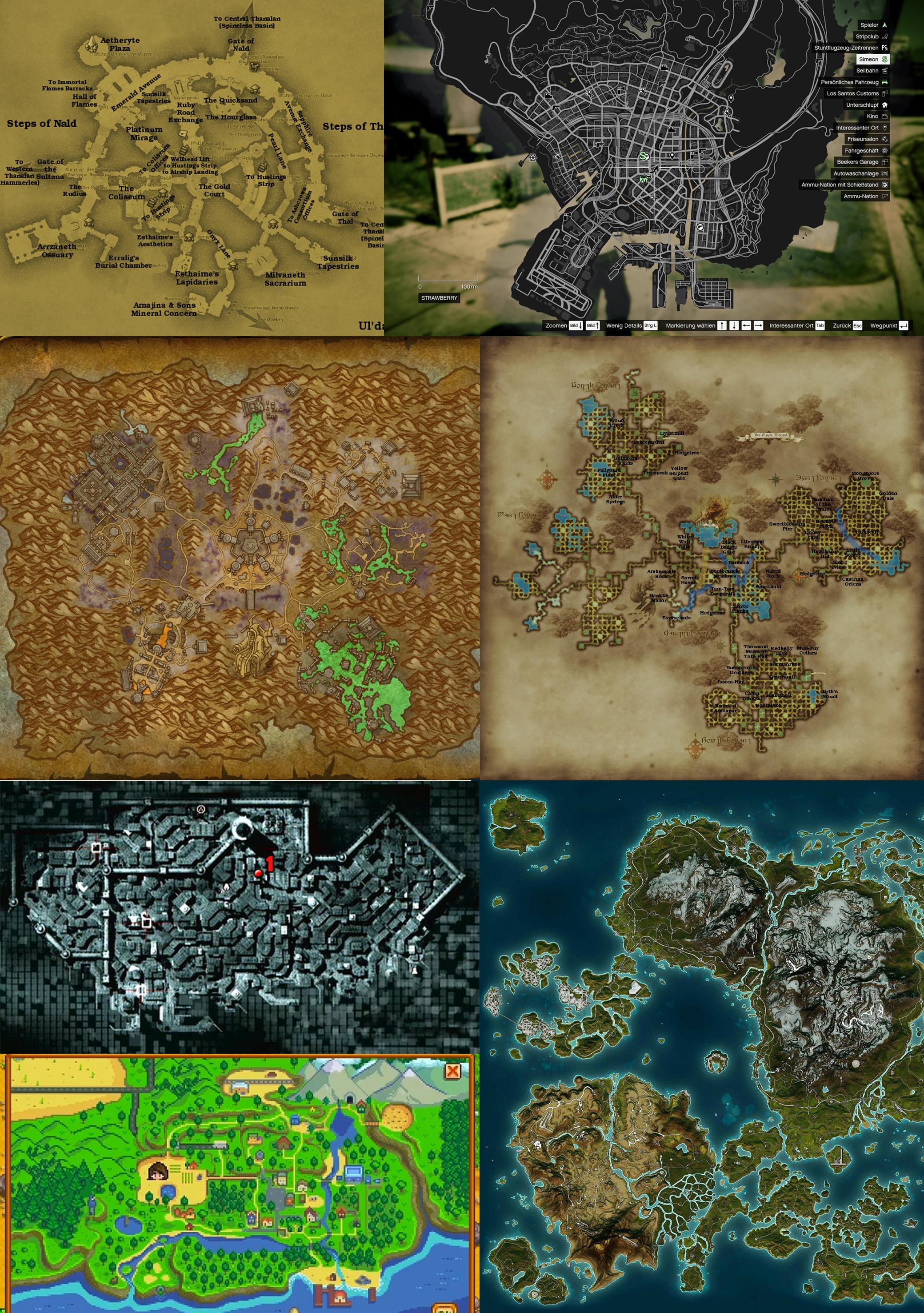
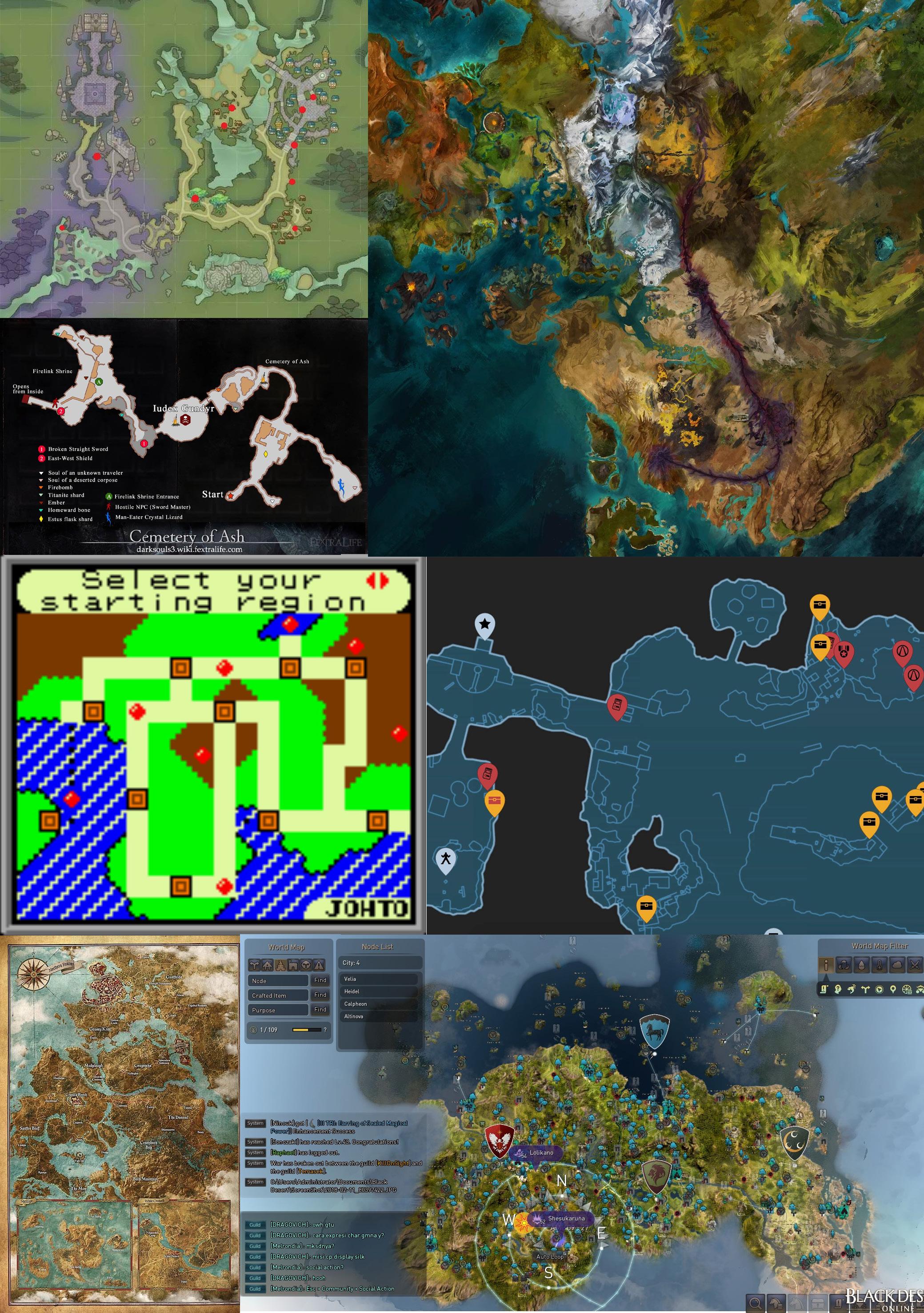
ARCHITECTURE
The Architect in the Game Field
In his article The Role of Architects in VR, AR, and Video Games, Quinn Levine attempts to clear the misunderstanding that architects and designers hold knowledge that is limited to construction and real-life building design. This is due to the thought that there is a clear relation between the real and the virtual in terms of design process (Levine). This claim holds a truth to it, as it is a fact that many architects have been involved in the field of video games. This may include and is not limited to: becoming a game developer, consulting in video game environments or designing a video game.
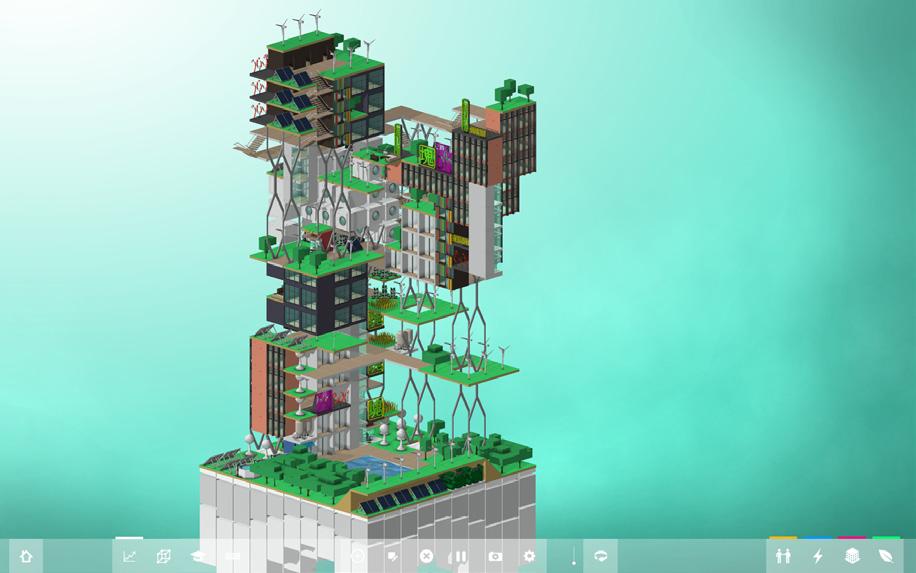
GAME : BLOCK'HOOD
A considerable amount of architects have seen a bond with the world of video games and game development. Dan Van Buren, Catrina Stewart and Maia Levinshtein, as well as Jose Sanchez who designed the video game Block’Hood. Maria Elisa Navarro was an architectural consultant for the video game Assassin’s Creed II. She made corrections and improvements to the recreated cities of the game, which in this case included Florence, Venice, and San Gimignano (Dube). This is an optimal job for an architect, for the architecture in Italy is known for its rich architectural history and is often if not always taught in architecture schools. Thus, someone with expertise in the architectural field is fit for such a task. The architect is not only the designer of a scenery. An online interview with Volodymyr Donchenko asks of the potential of architecture in the gaming world. "Of course they can improve video game spaces. Its always good to have not only concept artist in team, also architect will be very useful to develop game map ( space). It can be nice design that is easy to explore and understand for players. Just like in real life people have experience passing locations, player also do that in virtual world. Well done architecture interesting for observing and can be guide to story, game play, way direction" (Donchenko).
GAME DESIGNER : JOSE SANCHEZ
ORIGINAL PROFESSION : ARCHITECT
GAME GENRE : BUILDING SANDBOX
LEFT : GAME CONCEPT
ABOVE : SCREENSHOT OF GAMEPLAY
GAME : ASSASSIN'S CREED II
GAME COMPANY : UBISOFT MONTREAL
ARCHITECTURAL CONSULTANT : María Elisa Navarro
ORIGINAL PROFESSION : Architectural History and Theory
PROFESSOR
GAME GENRE : OPEN-WORLD HISTORICAL ADVENTURE
ABOVE : DIGITAL ART OF LOCATION IN ASSASSIN'S CREED II

037
47 48
Recall the example of Cyberpunk 2077. The city-like space of the game seems almost too realistic. However, this does not come as a surprise, since the main character behind this aesthetic realism was the urban planner that was brought to the design team. “It was interesting when we designed Night City, it's of course based on 2020, but we actually had an urban planner on our team that really helped us create this layout. It was also to make sure that you always had cool views or you always know where you're going, it was really tough actually because it can quickly become very confusing if you can't really see where you are. The composition was very important for that.”
Says Marthe Jonkers, the senior concept artist of Cyberpunk 2077 and then adds: “It really helps and it's really great. You need someone who thinks about the layout, the map and how the roads will go and what is realistic” (Jonkers and Hashimoto). This not only commends the urban planner, but also emphasizes on the importance of individuals with the architectural expertise in video games; especially realistic ones. Jonkers mentions the advantages of the urban planner in the form of helping create a layout, made sure aesthetically pleasing views were available where possible and the creating ease of access and circulation.
GAME : CYBERPUNK 2077
PHOTO : CONCEPT SKETCH
APPROACH : FACADE OF CITY ENTRANCE


That being said, it was but a single urban planner in the team. The architectural potential of the game space was not fully achieved. “The game is an outdated critique on culture as a whole, but its disinterest and underinvestment in its architectural presentation is something architects should consider a serious challenge” (Hilburg). This does not undermine the aesthetically pleasing and unique visuals of the game, but rather a statement that aims to set them for an improvement; an architectural improvement. Hilburg also continues by explaining that it is not simply a matter of the architectural lack in Cyberpunk 2077, but is also a matter of architecture missing out in the creation of these virtual unreal spaces (Hilburg). Implying that the video game industry is in need of architects. Even if not completely, at least partially, as the need for insight of experts in the architectural field is apparent in many open-world video games such as GTA (Grand Theft Auto) and FFXIV (Final Fantasy 14). The case applies less to FFXIV as it was previously mentioned that the game leans more towards fantasy rather than reality. An interview by this research asks Volodymr Donchenko of the possibilty of architects being part of the game field, to which he responds: "Of course they can, even need be there. Size of game map every year become more bigger and bigger that why good have architect in team to help develop it" (Donchenko)
GAME : CYBERPUNK 2077
PHOTO : CONCEPT SKETCH
APPROACH : AXON OF CITY ENTRANCE
GAME : CYBERPUNK 2077
PHOTO : CONCEPT SKETCH
APPROACH : COMMON GROUND FLOOR SHOP
GAME : CYBERPUNK 2077
PHOTO : CONCEPT SKETCH
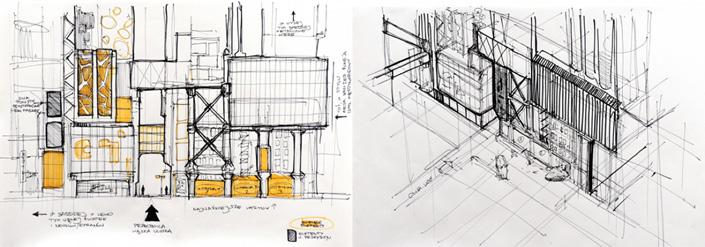
APPROACH : PATHWAYS BETWEEN BUILDINGS

038
49 50 51 52
































































